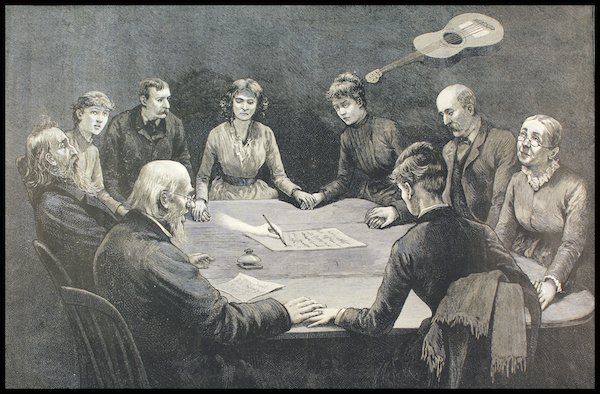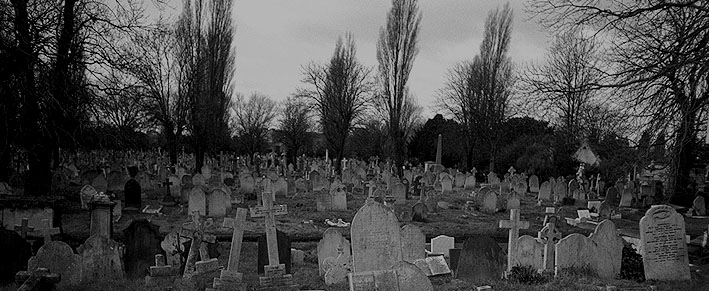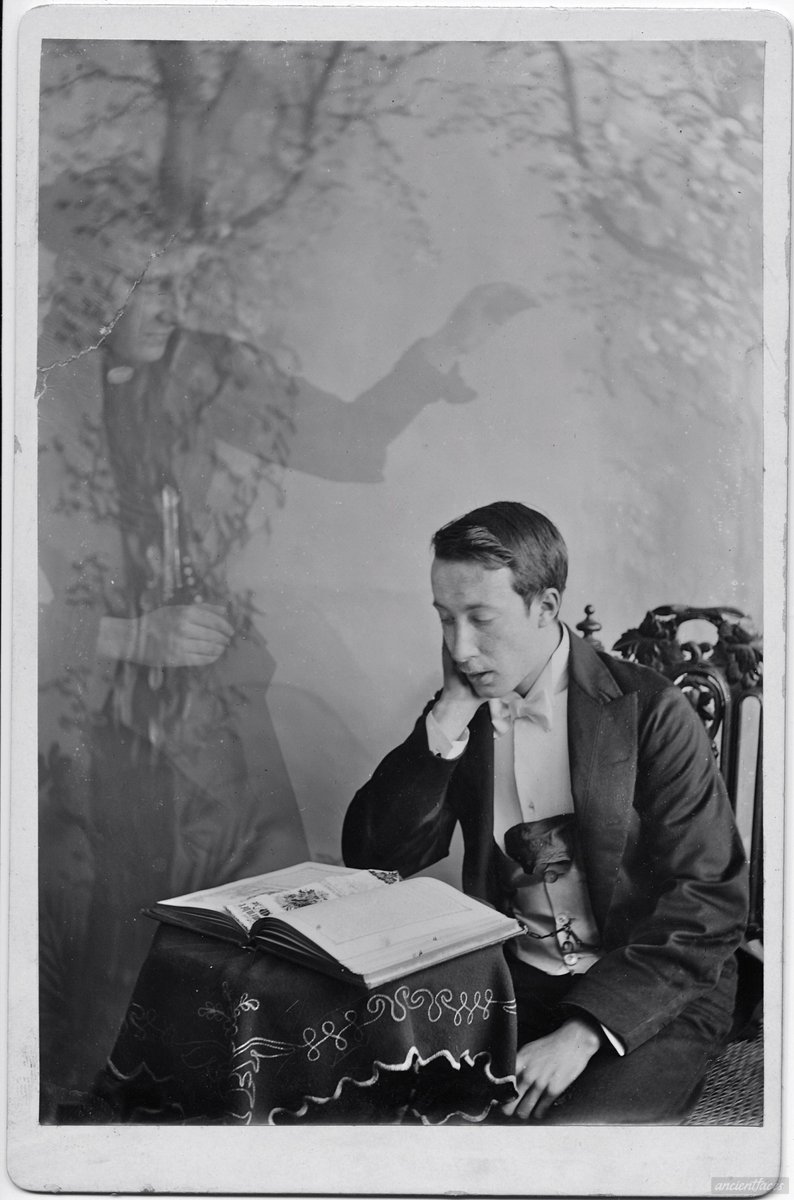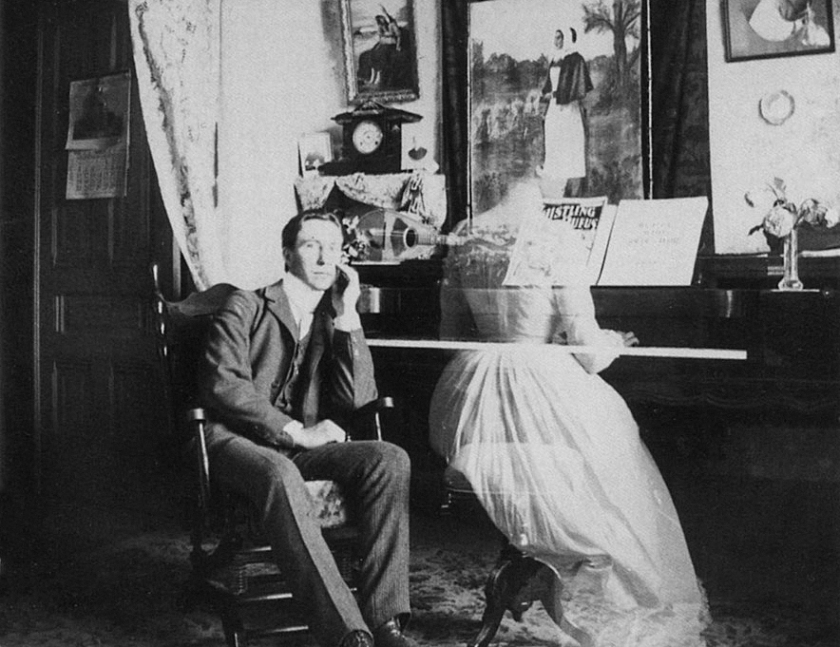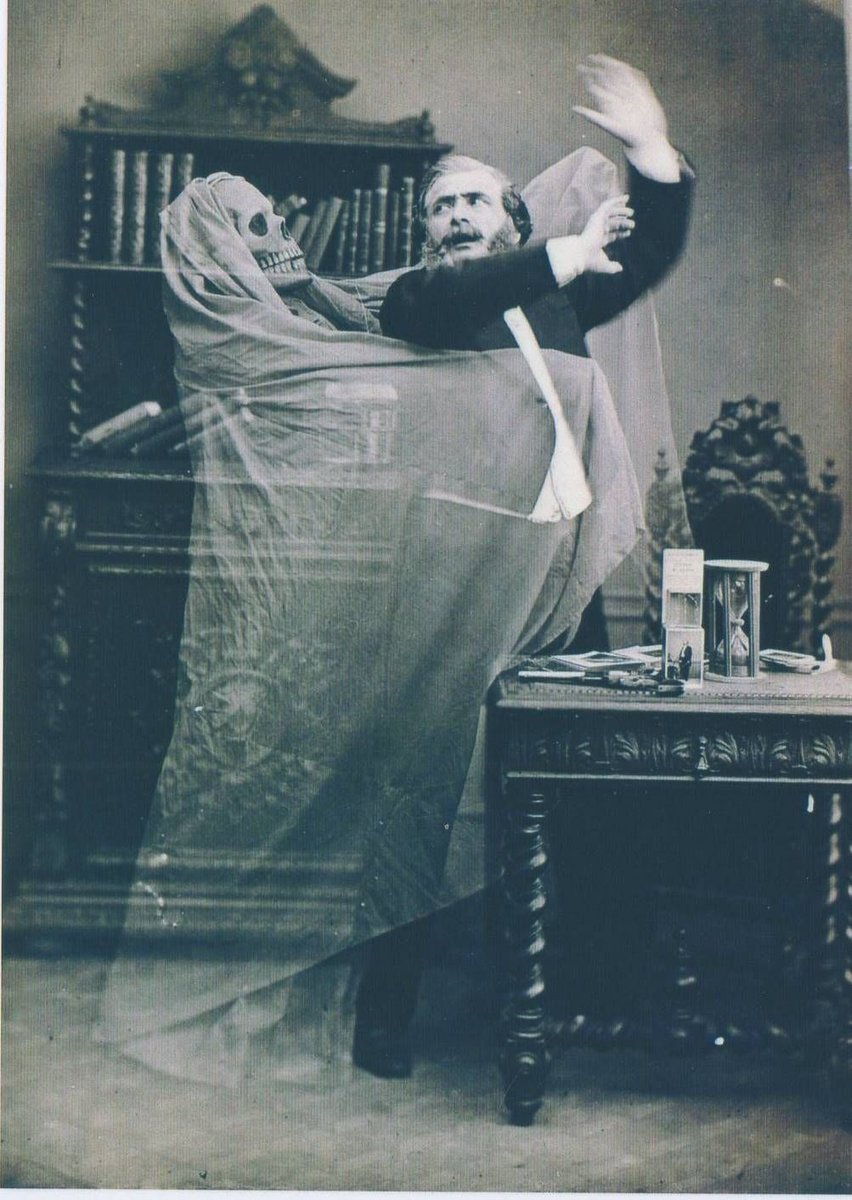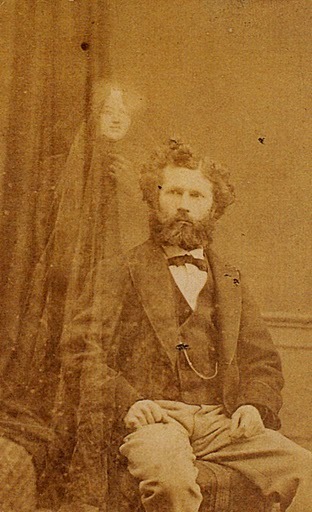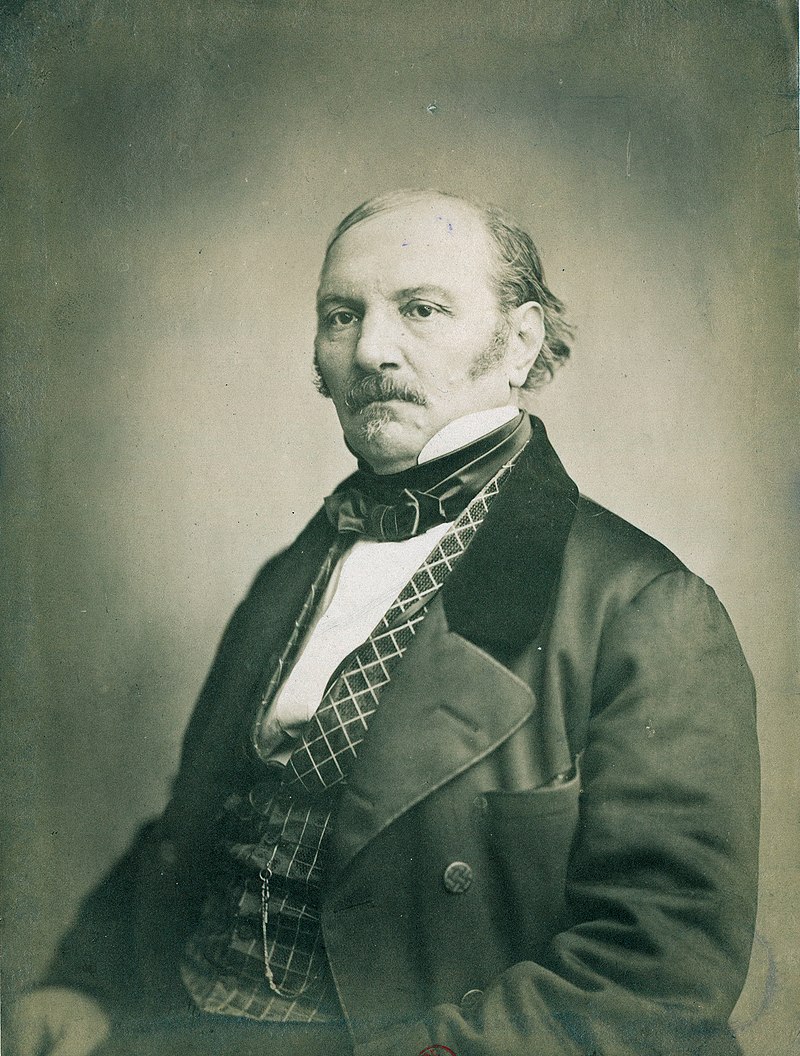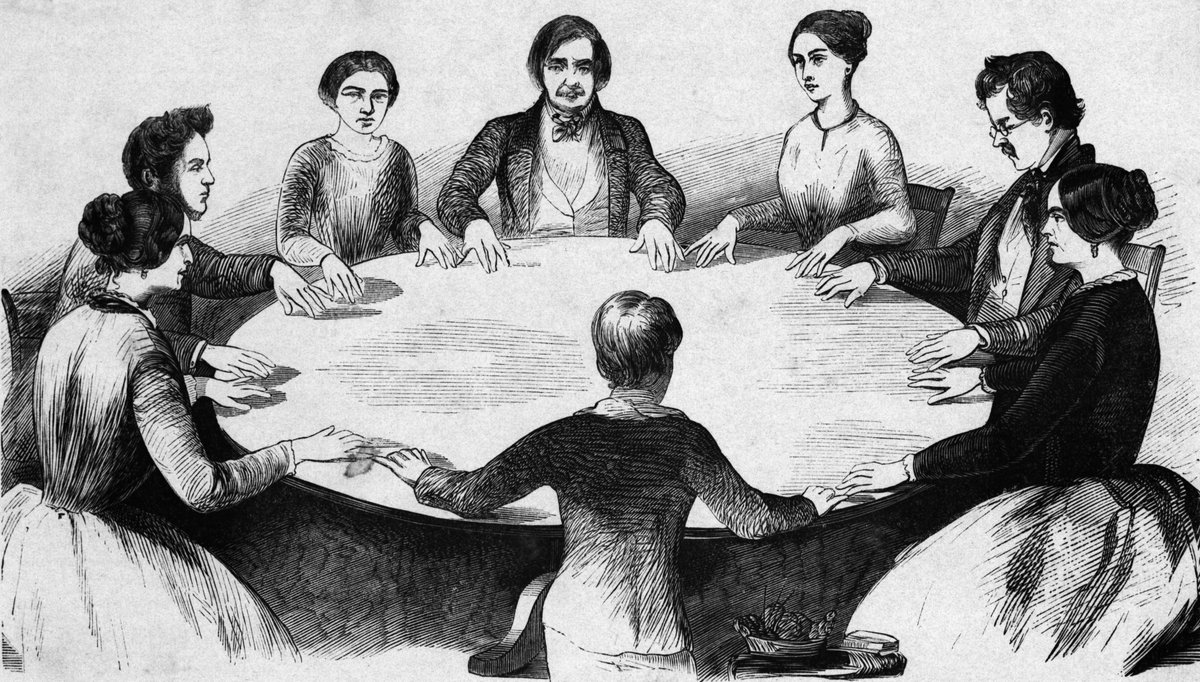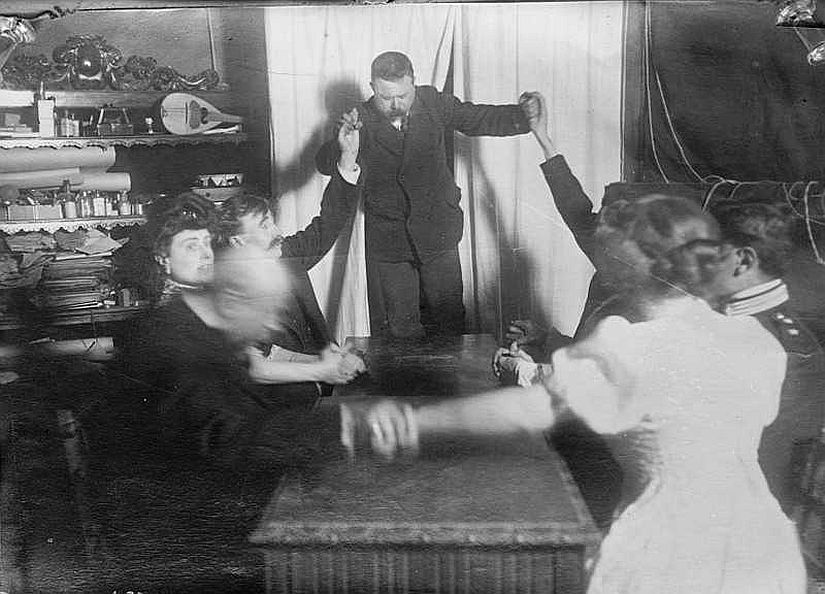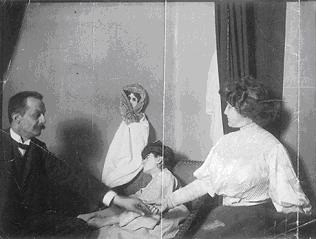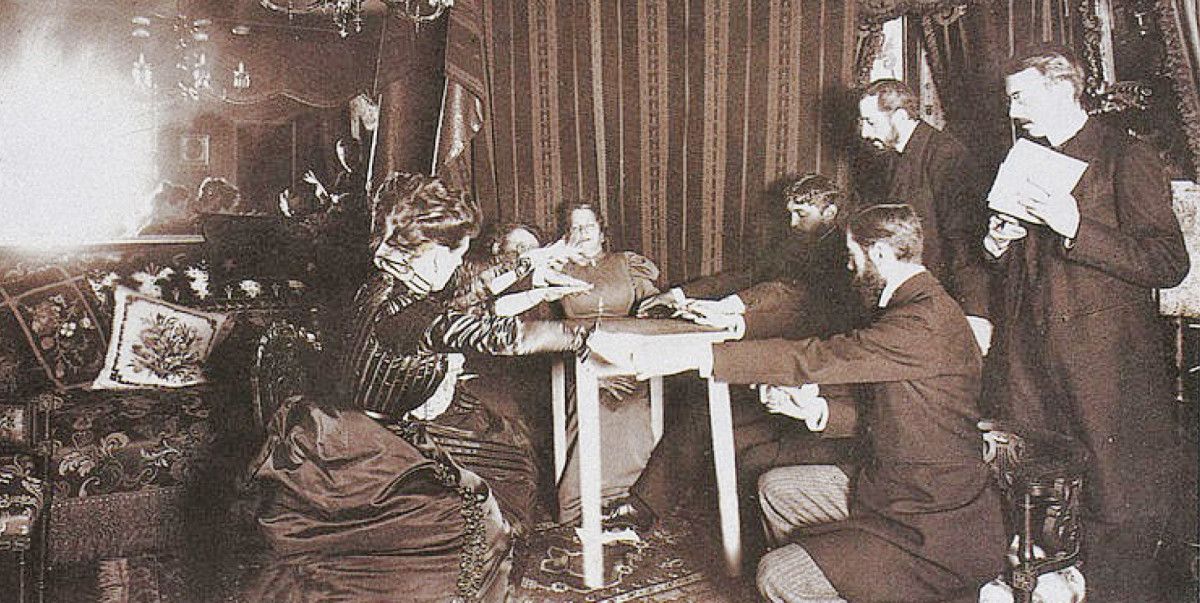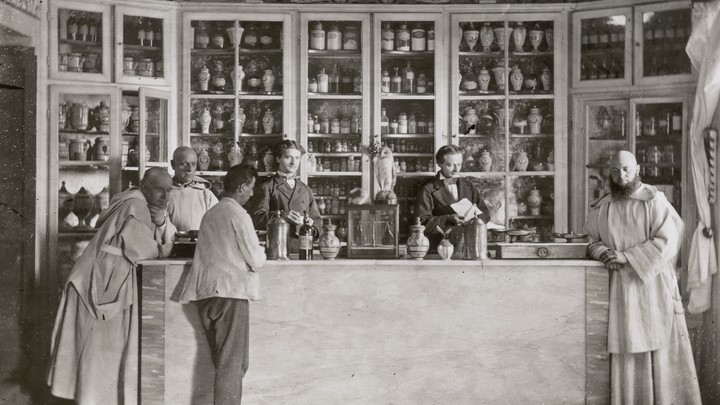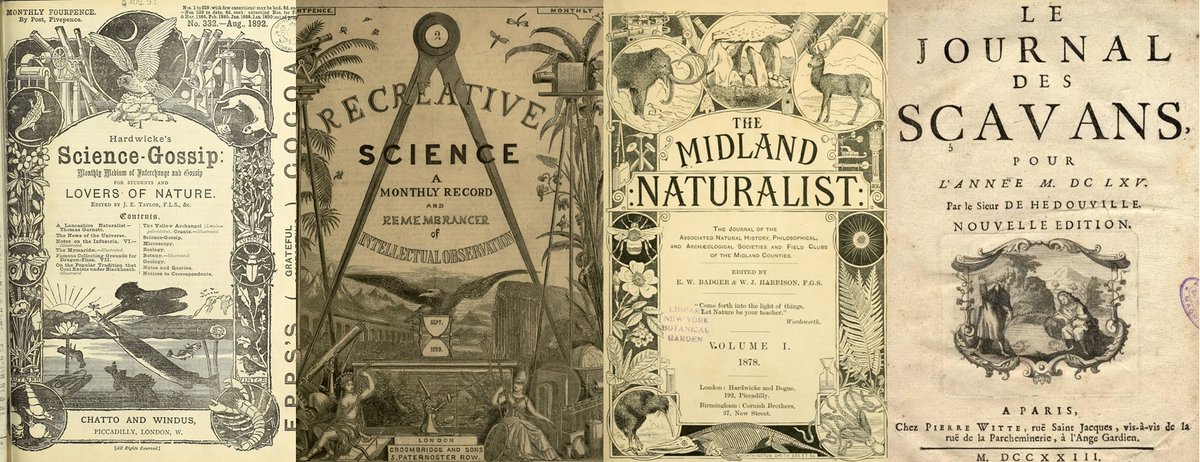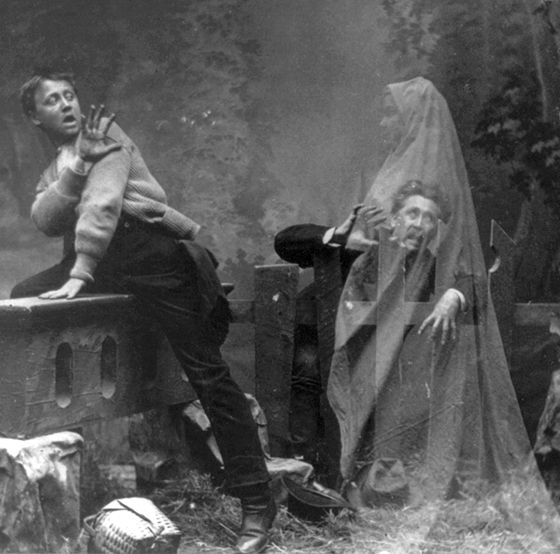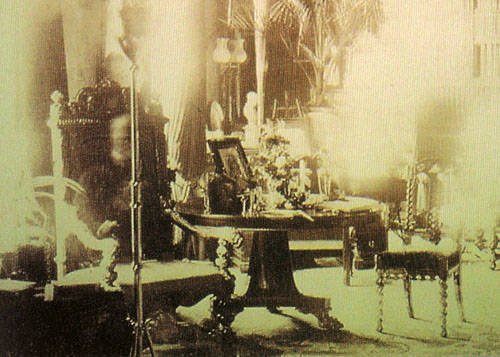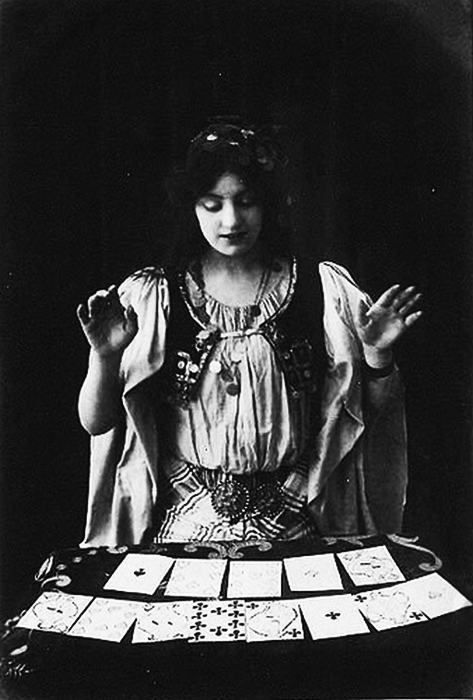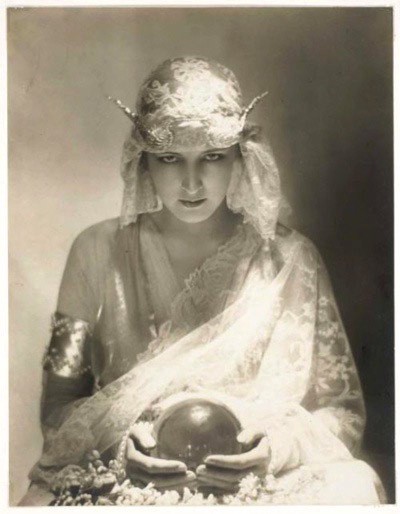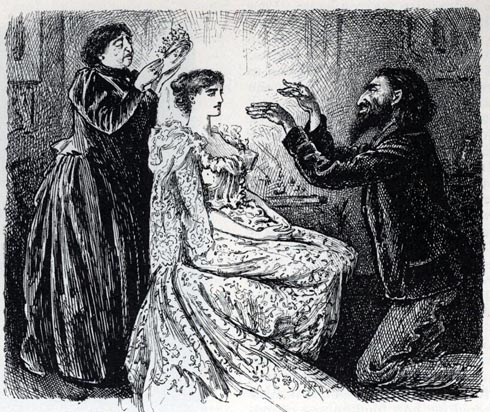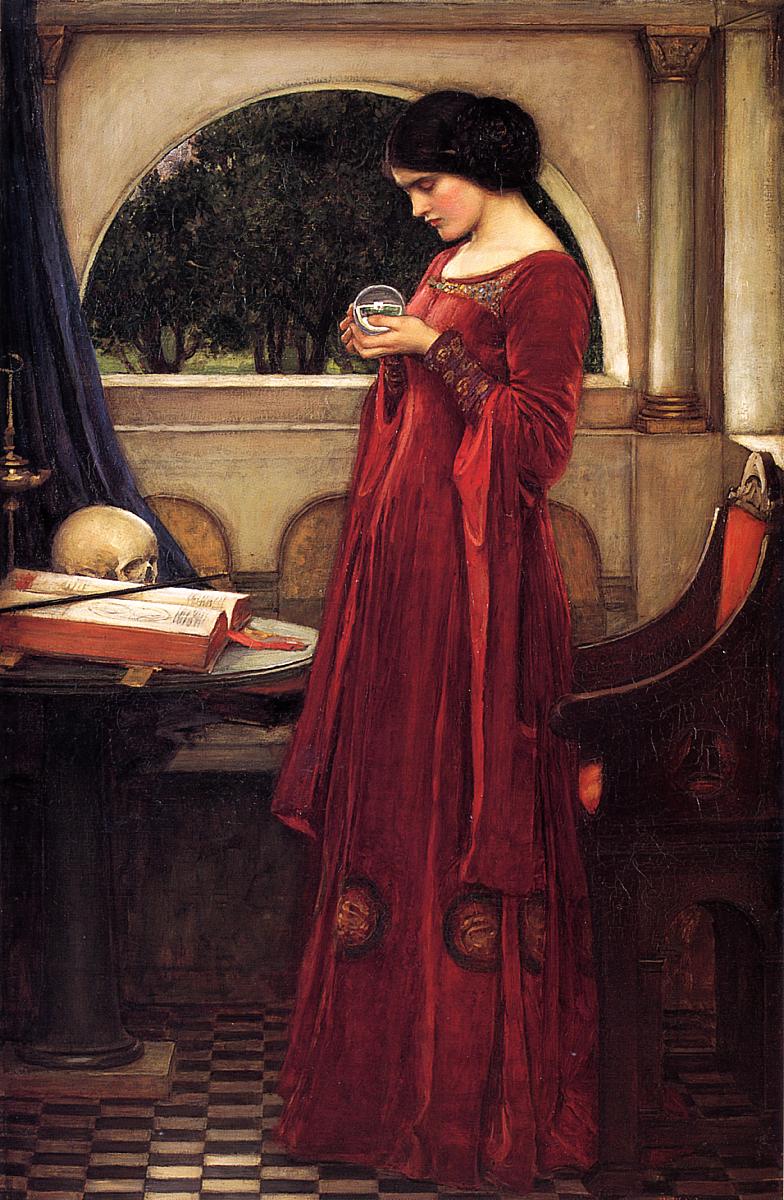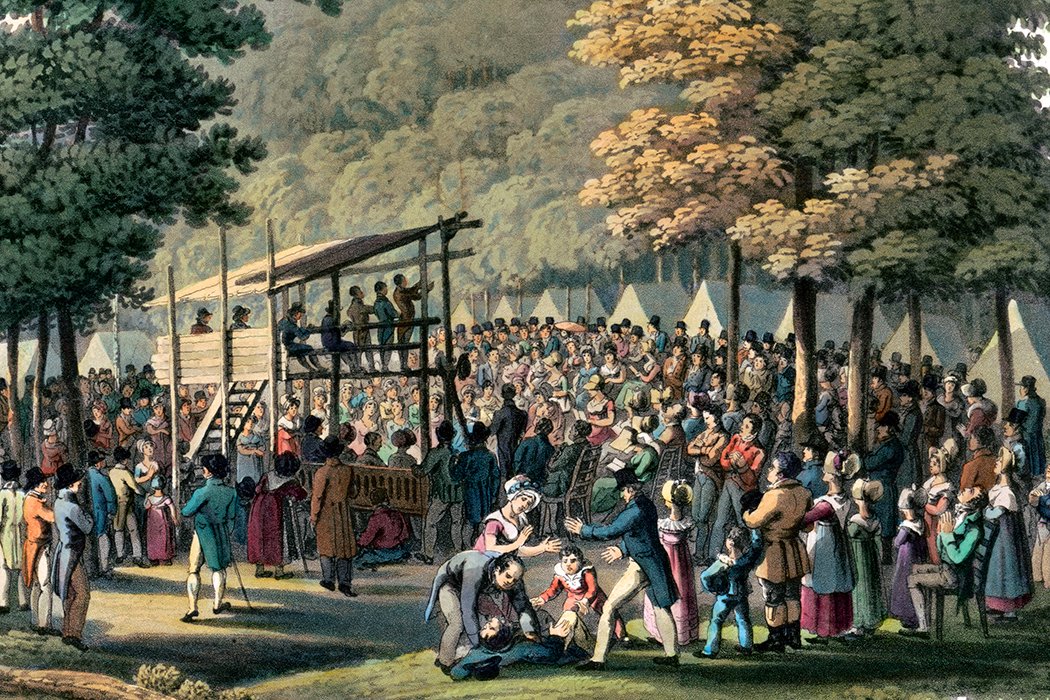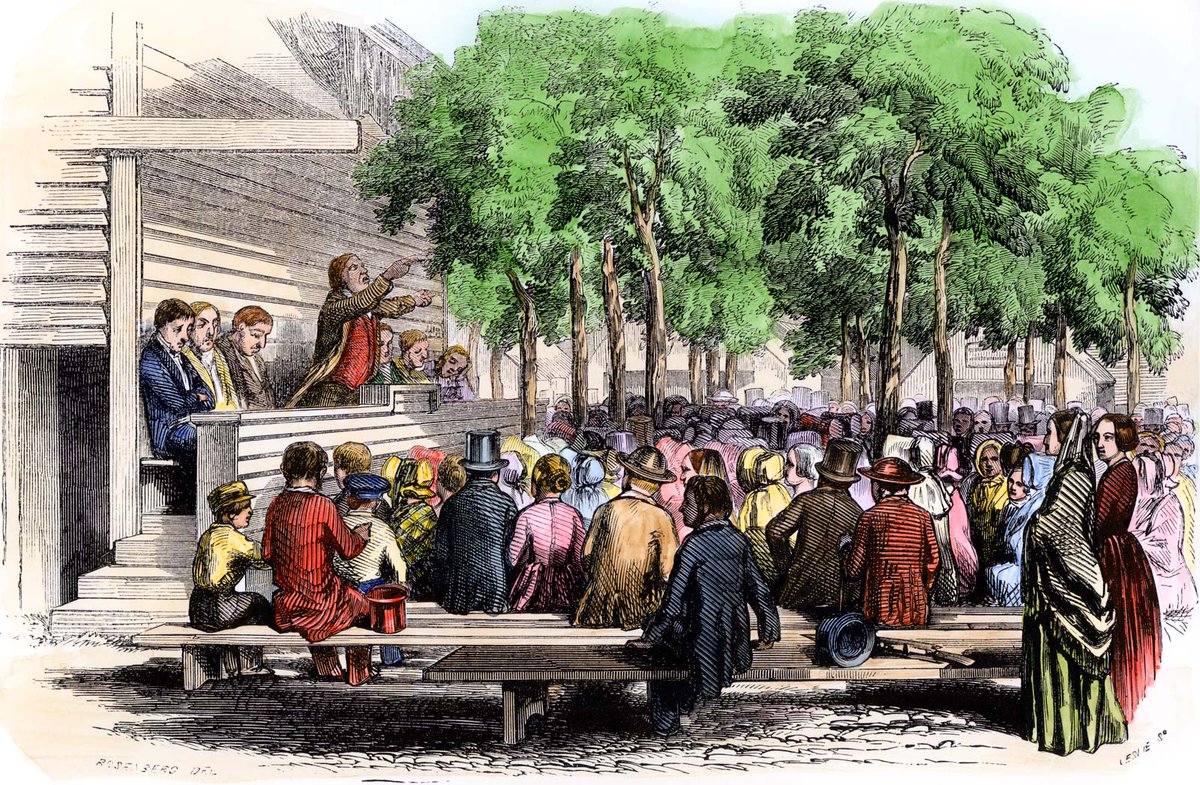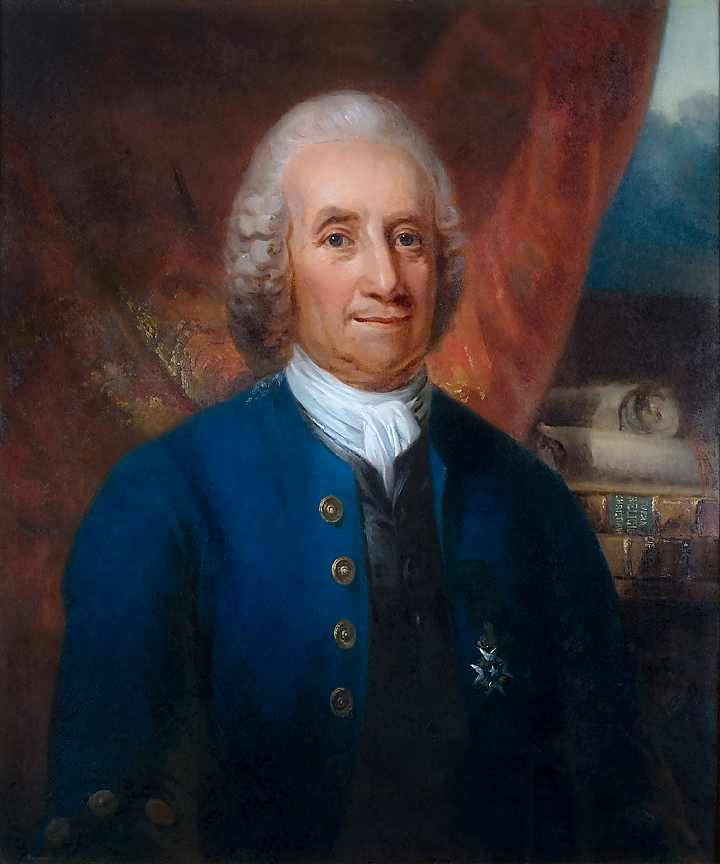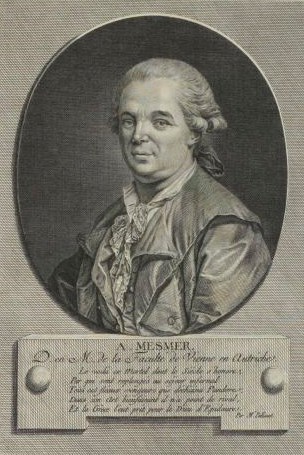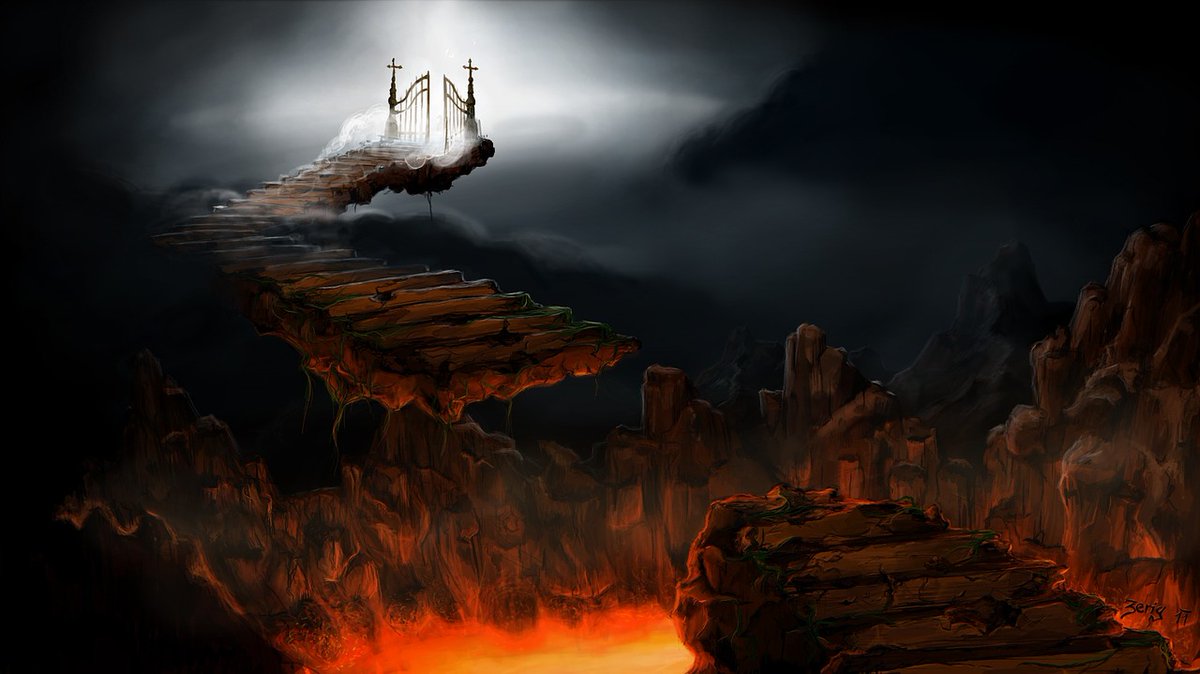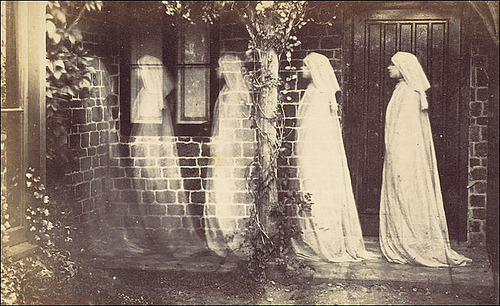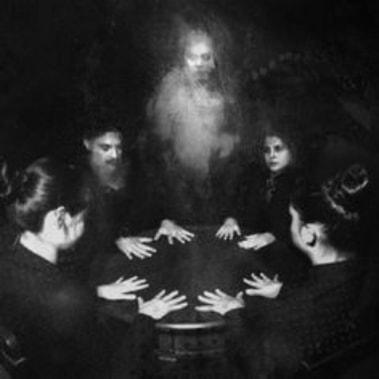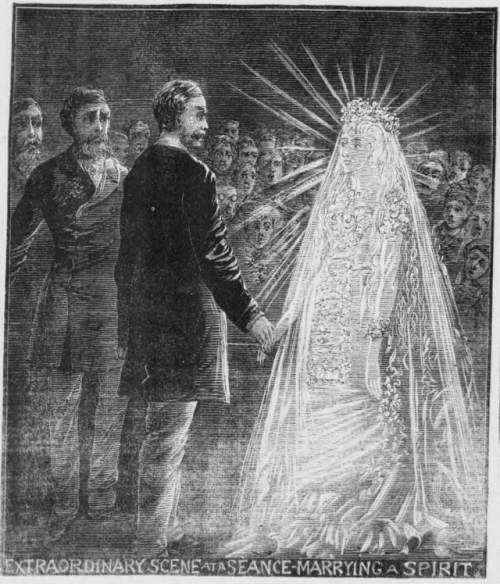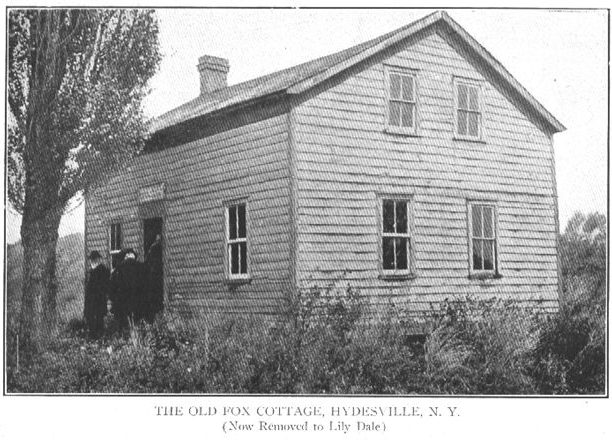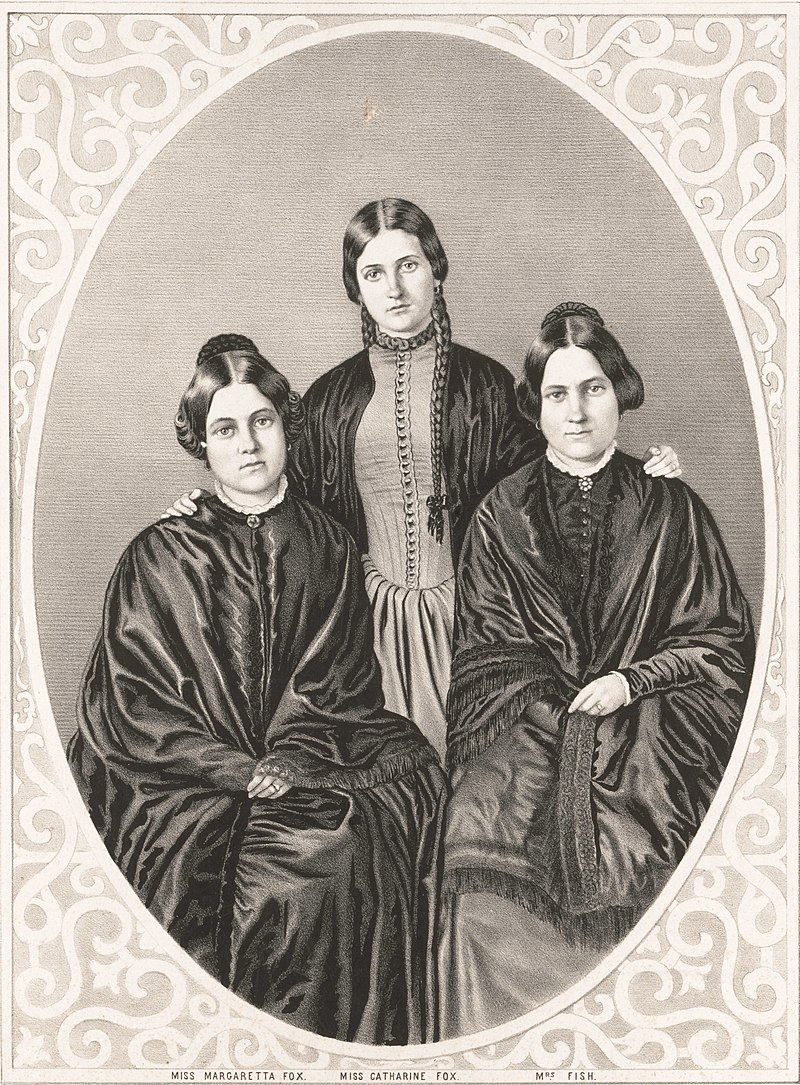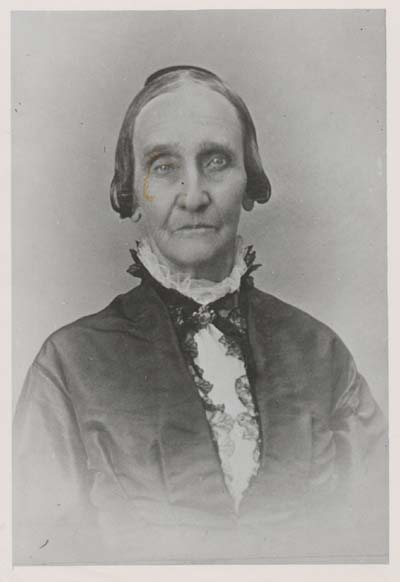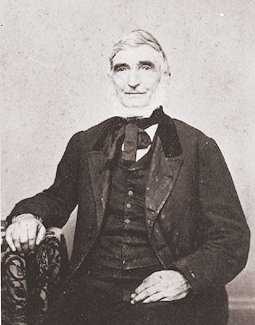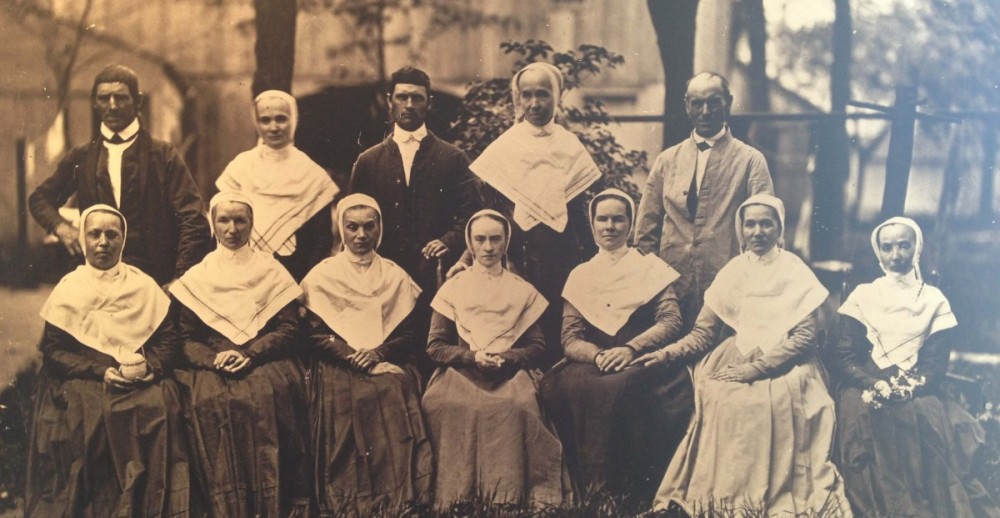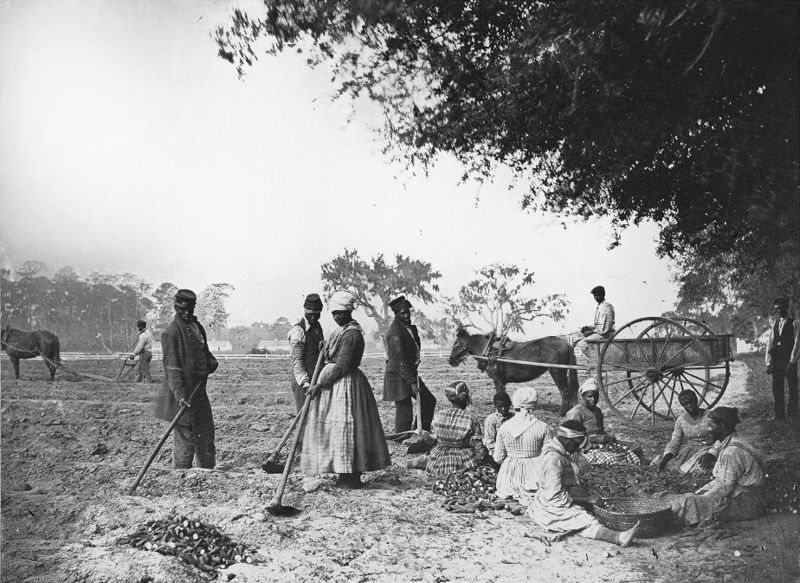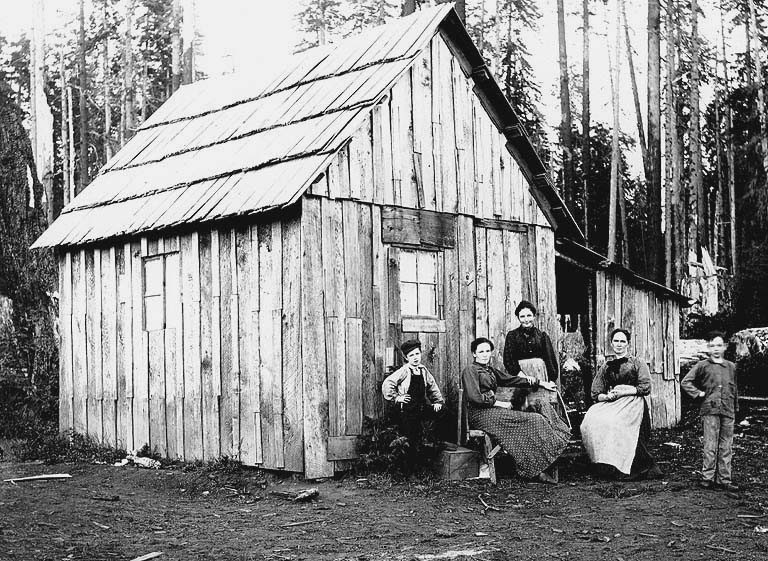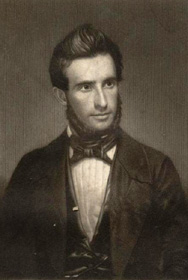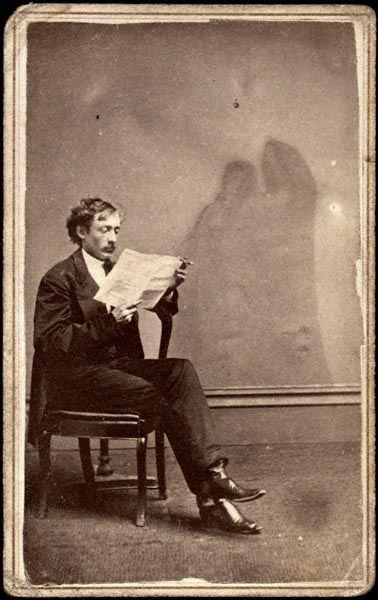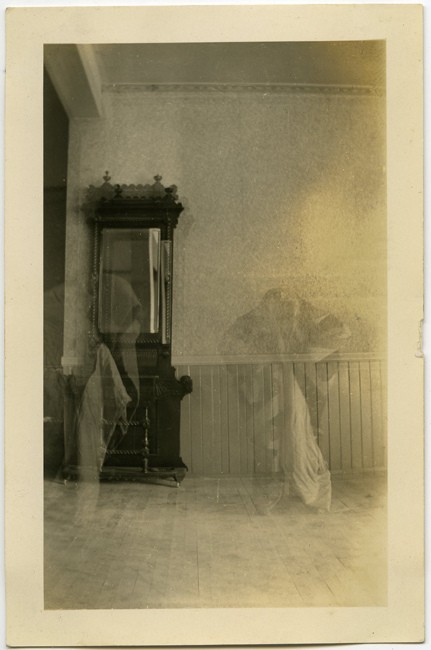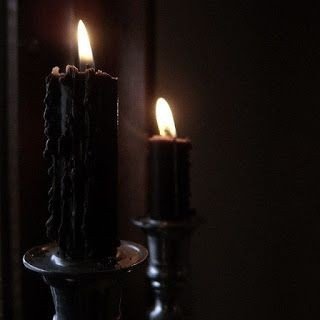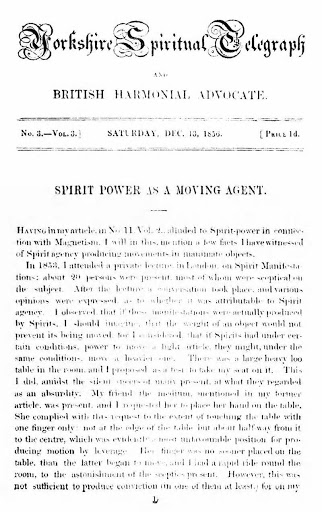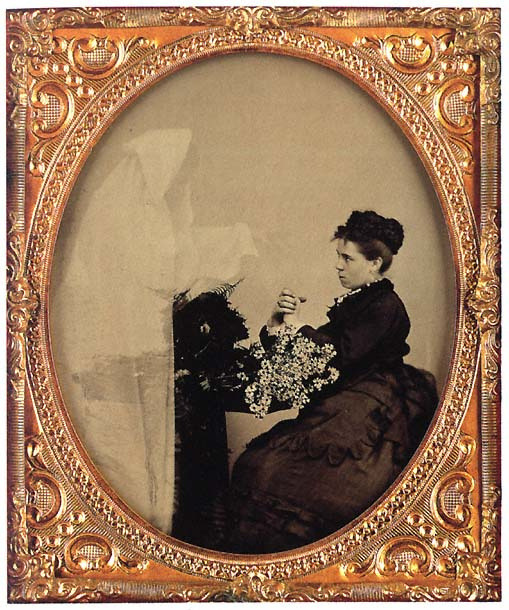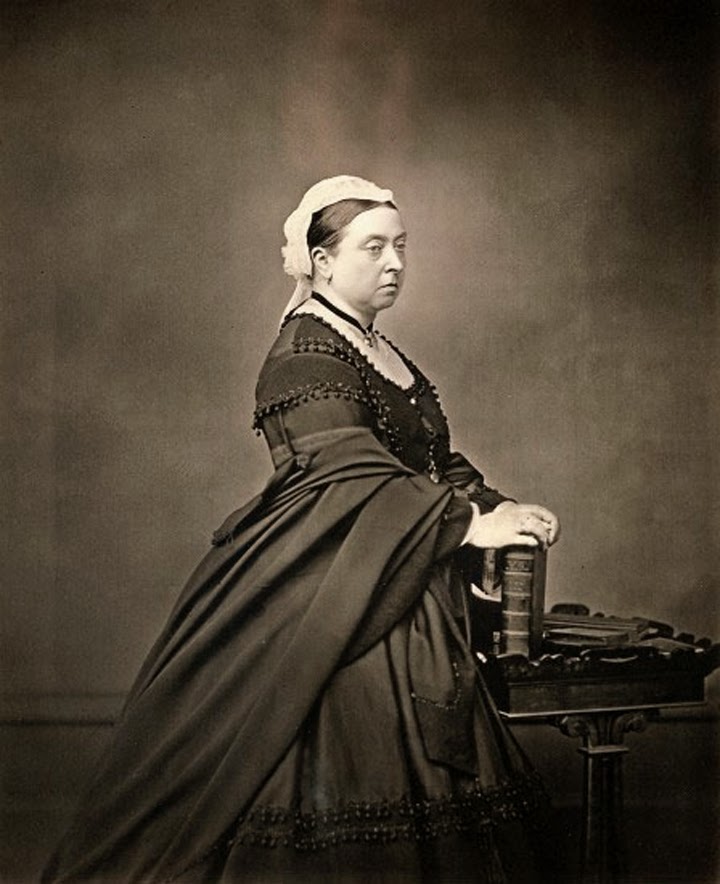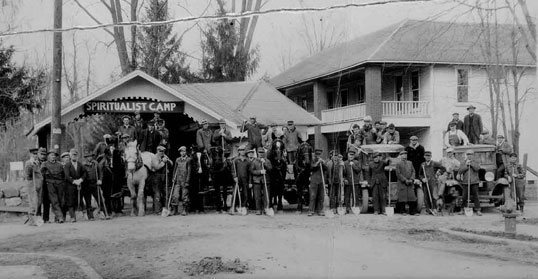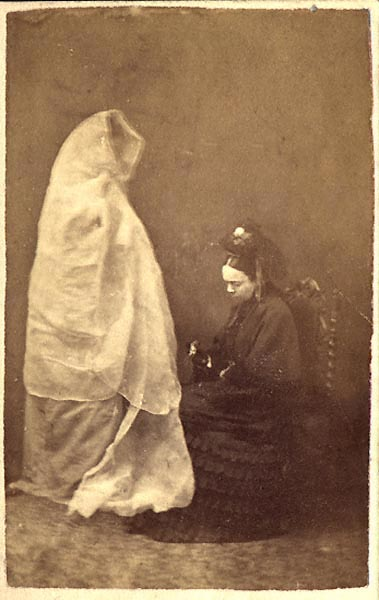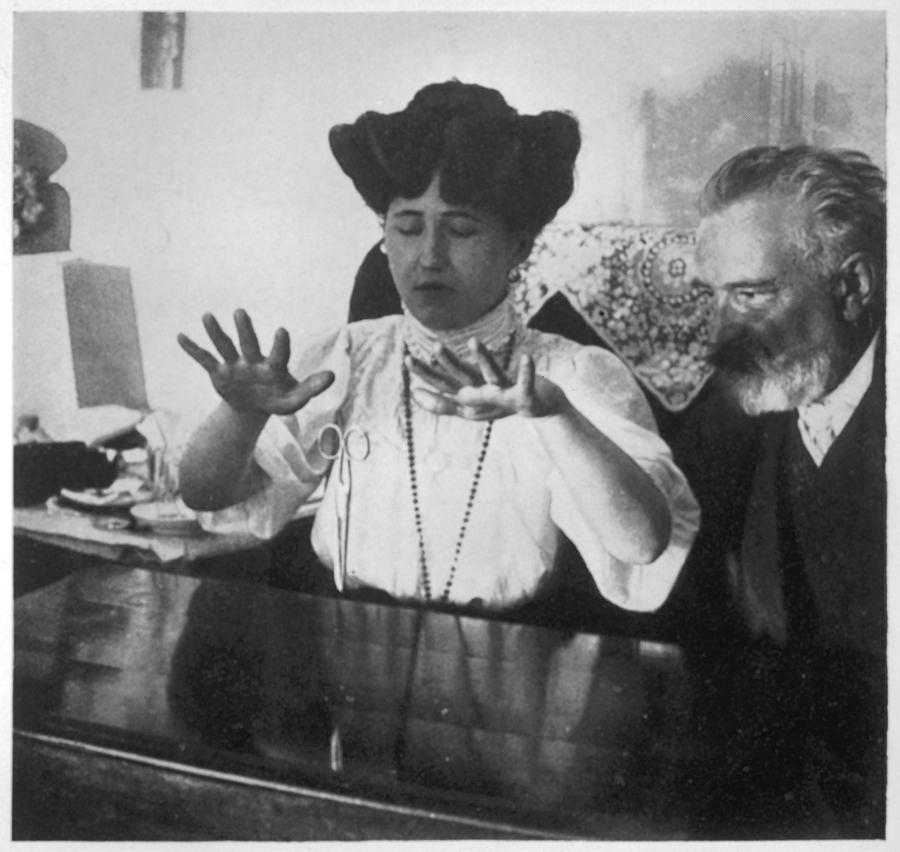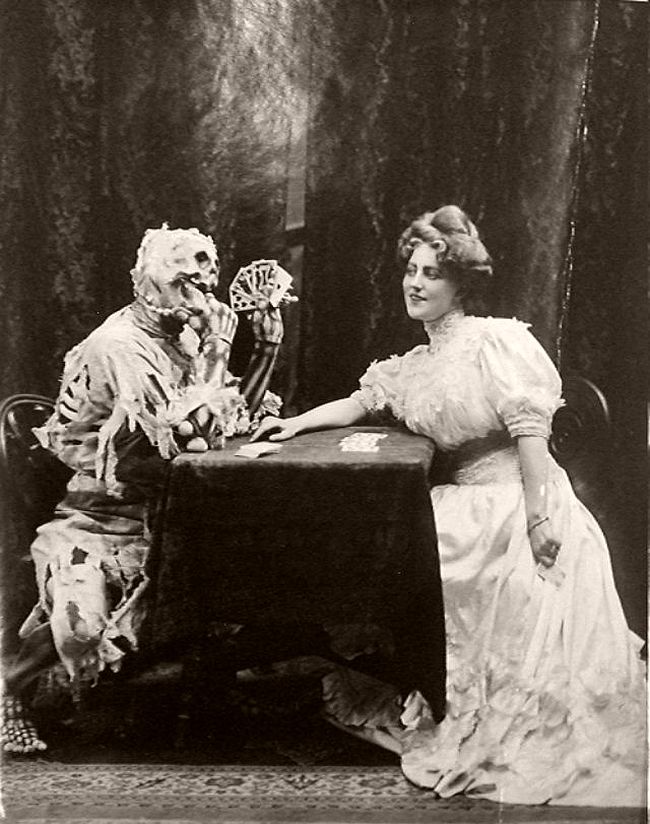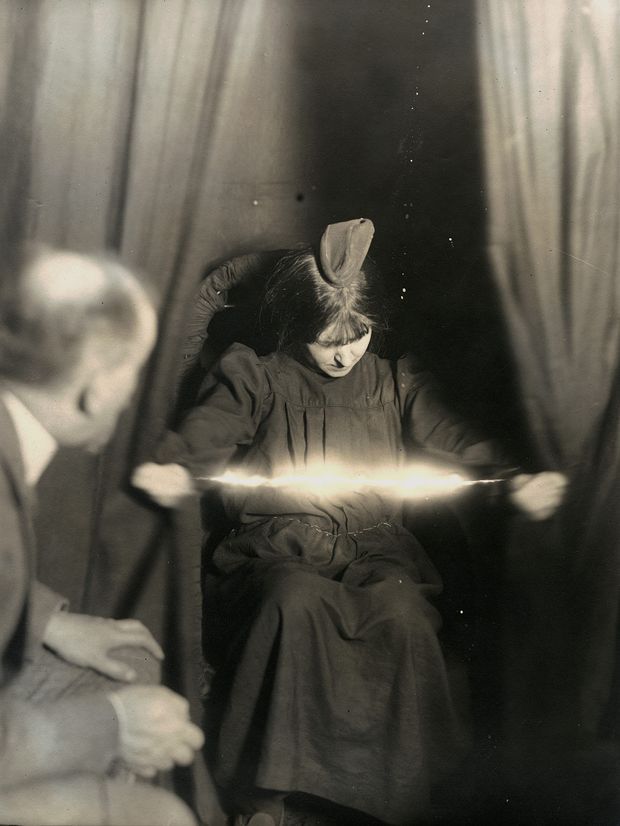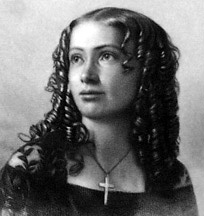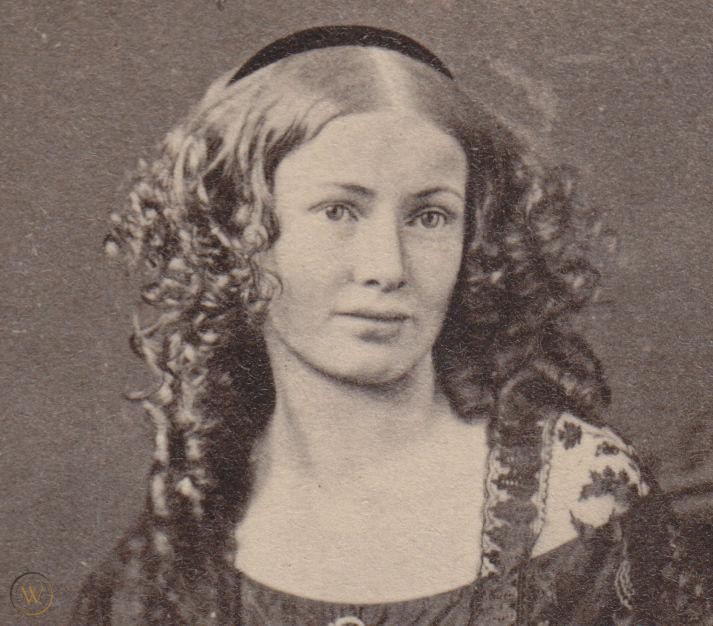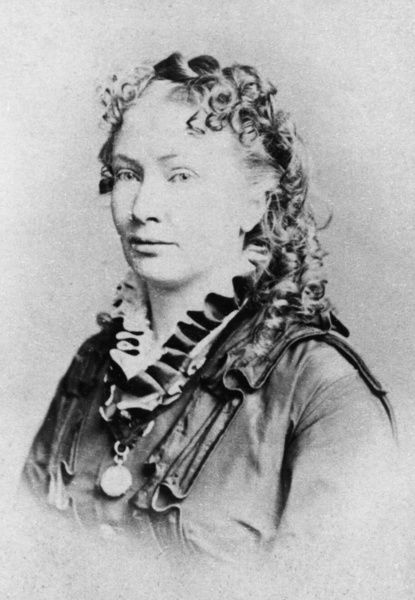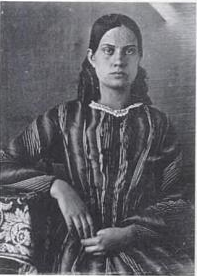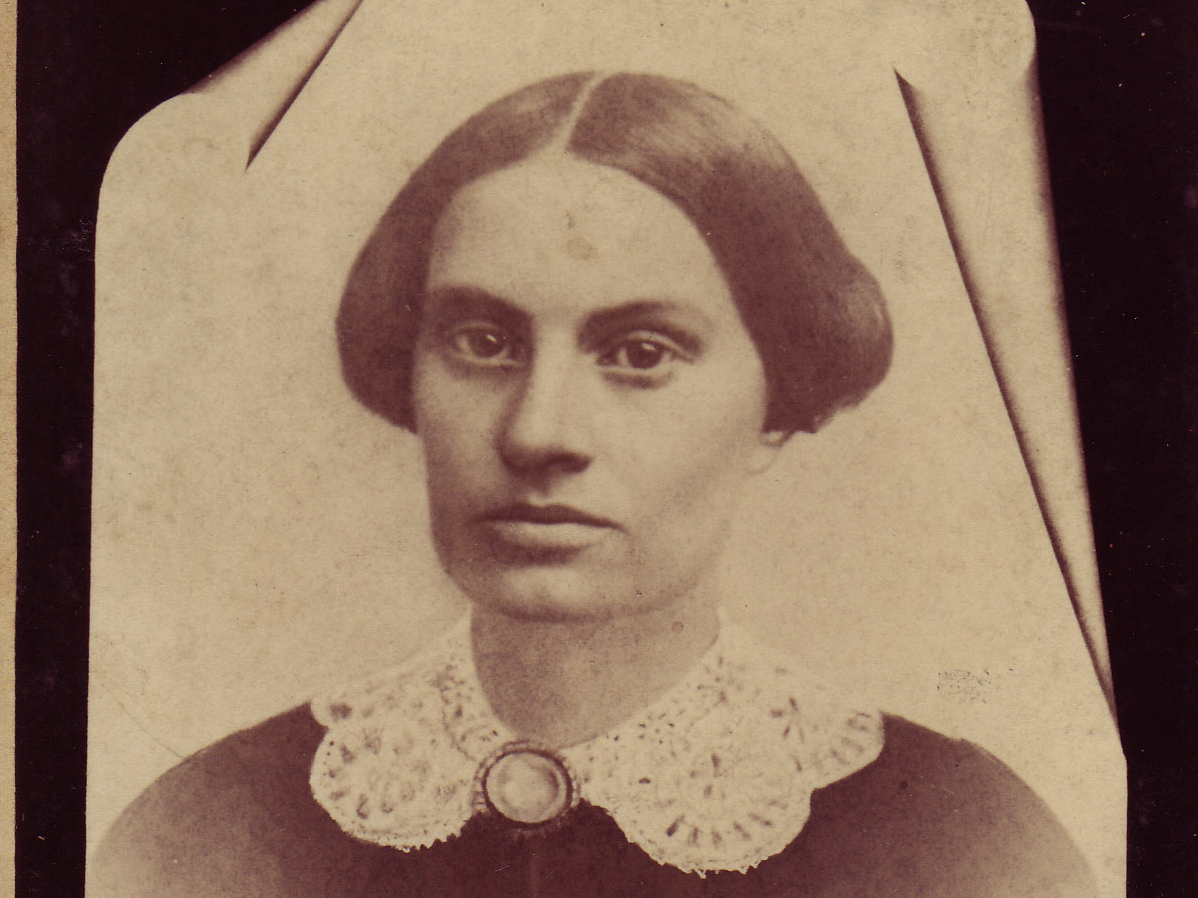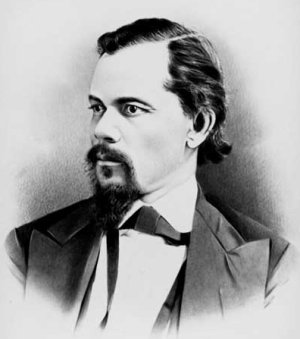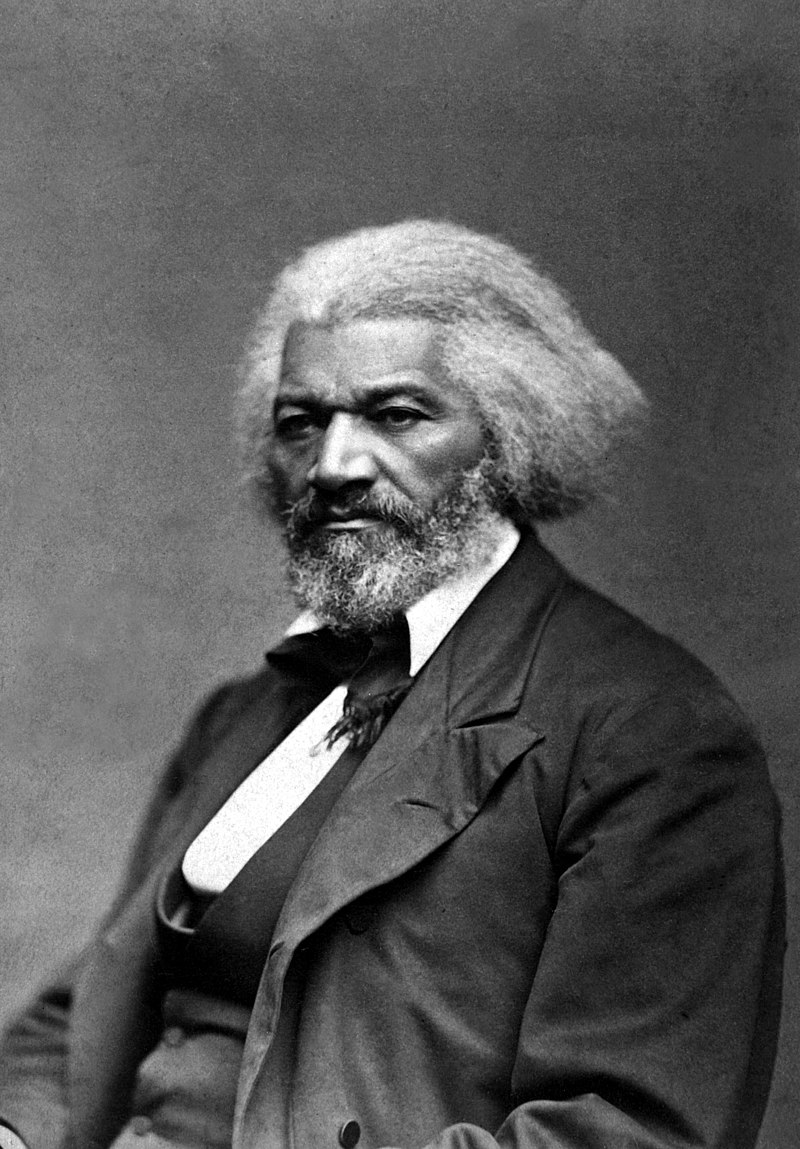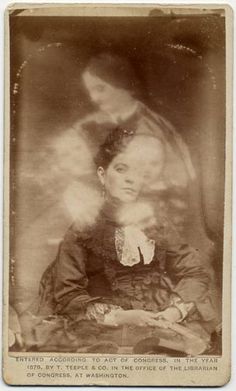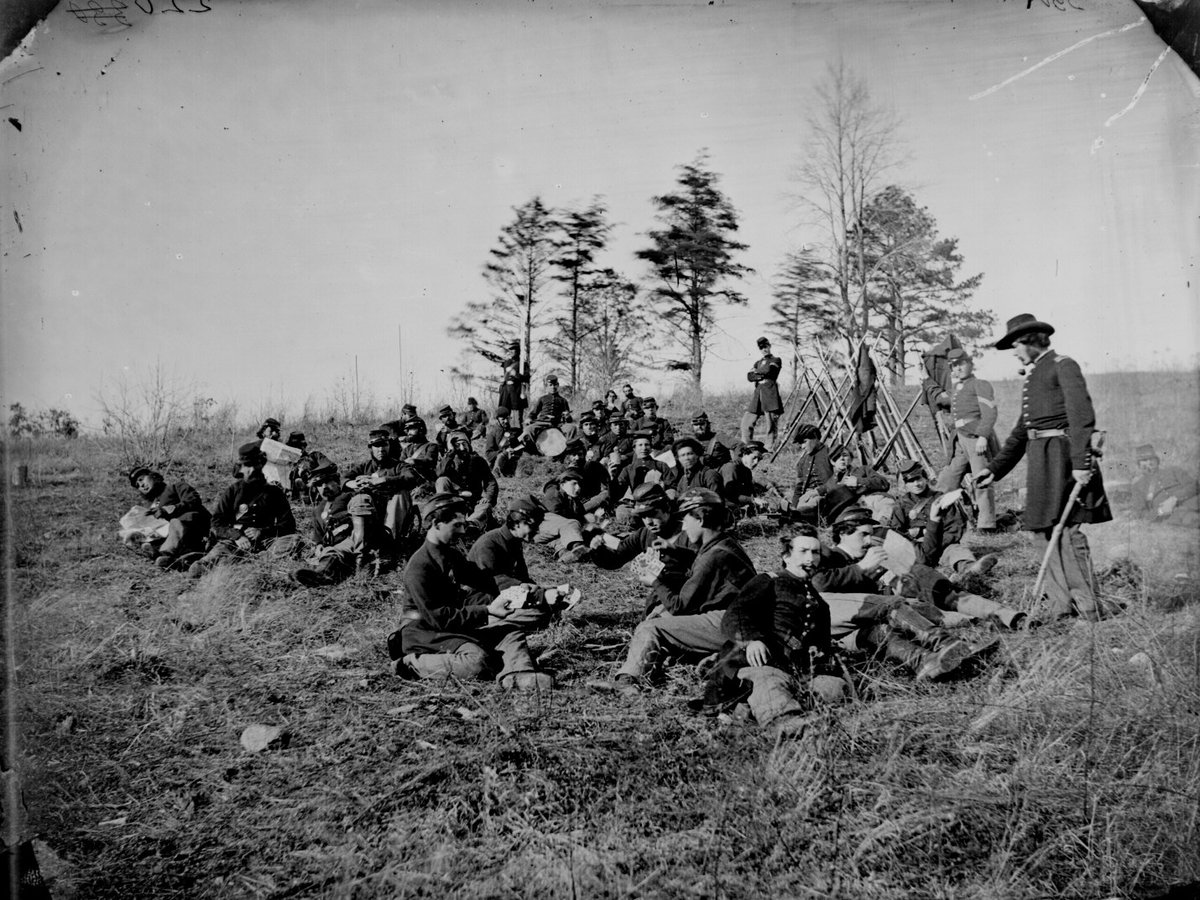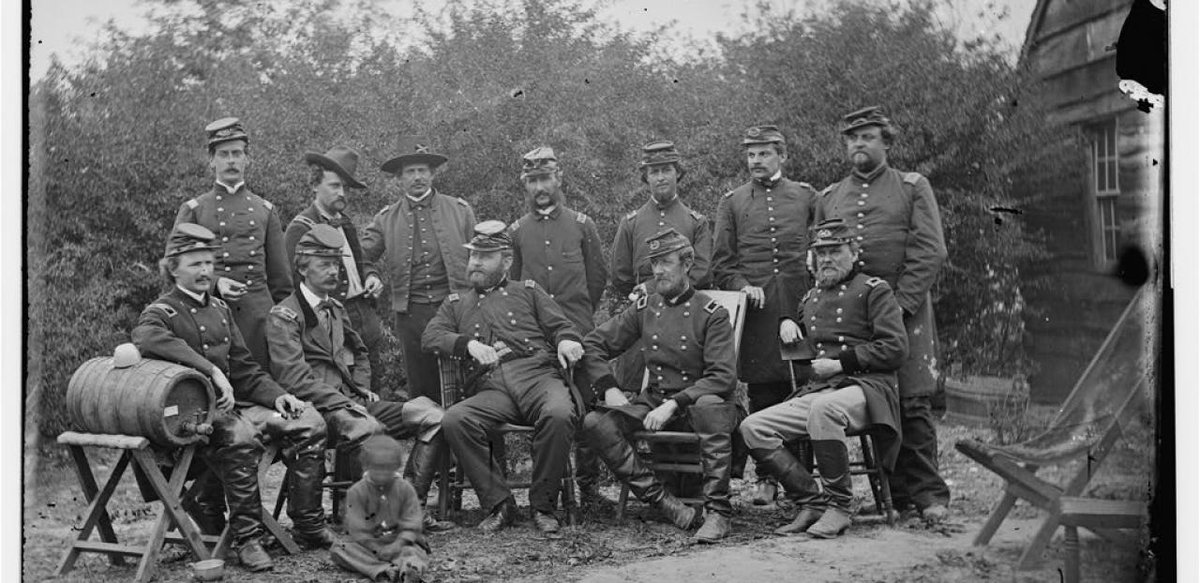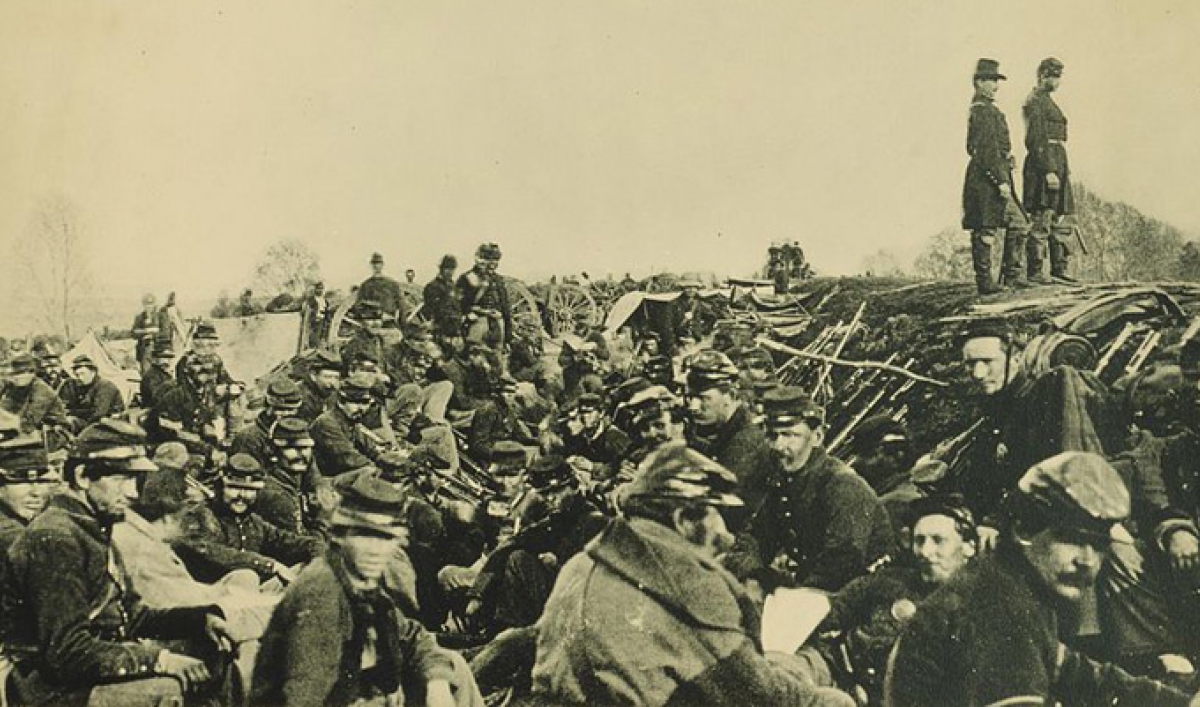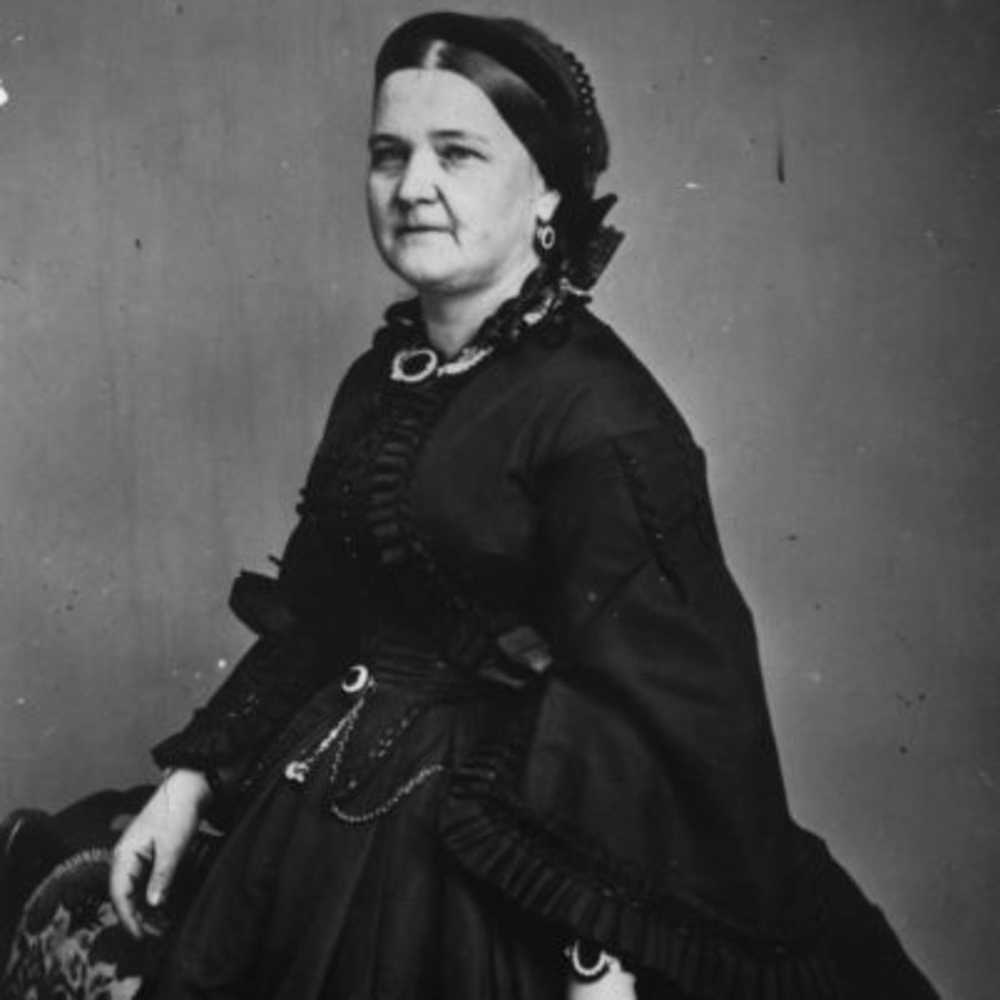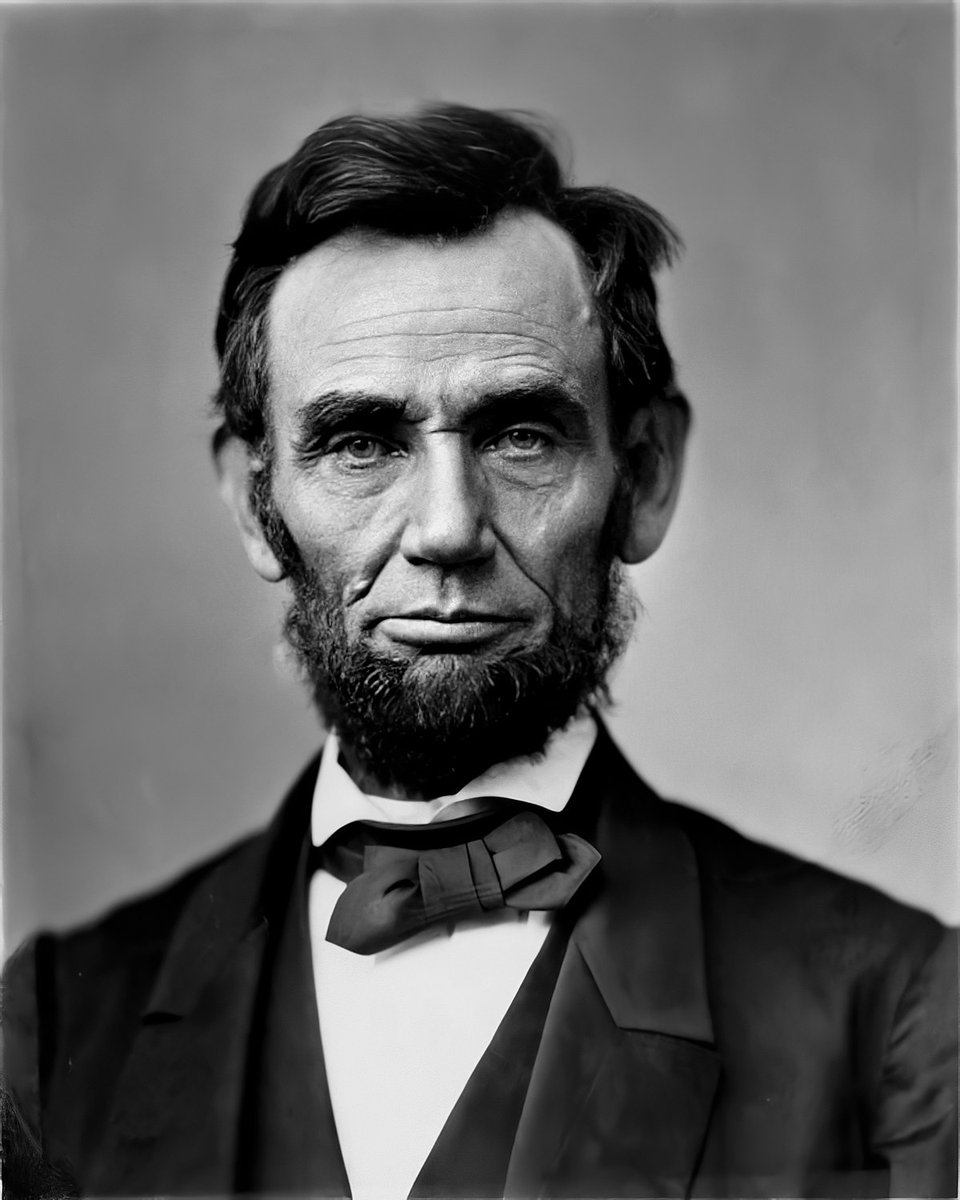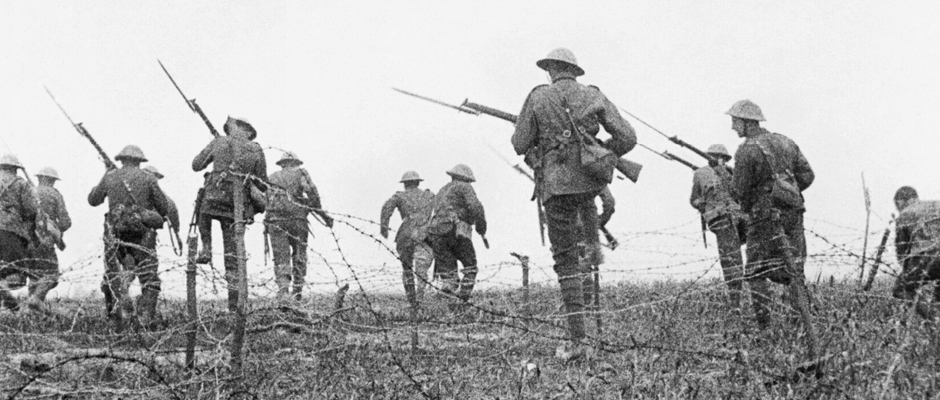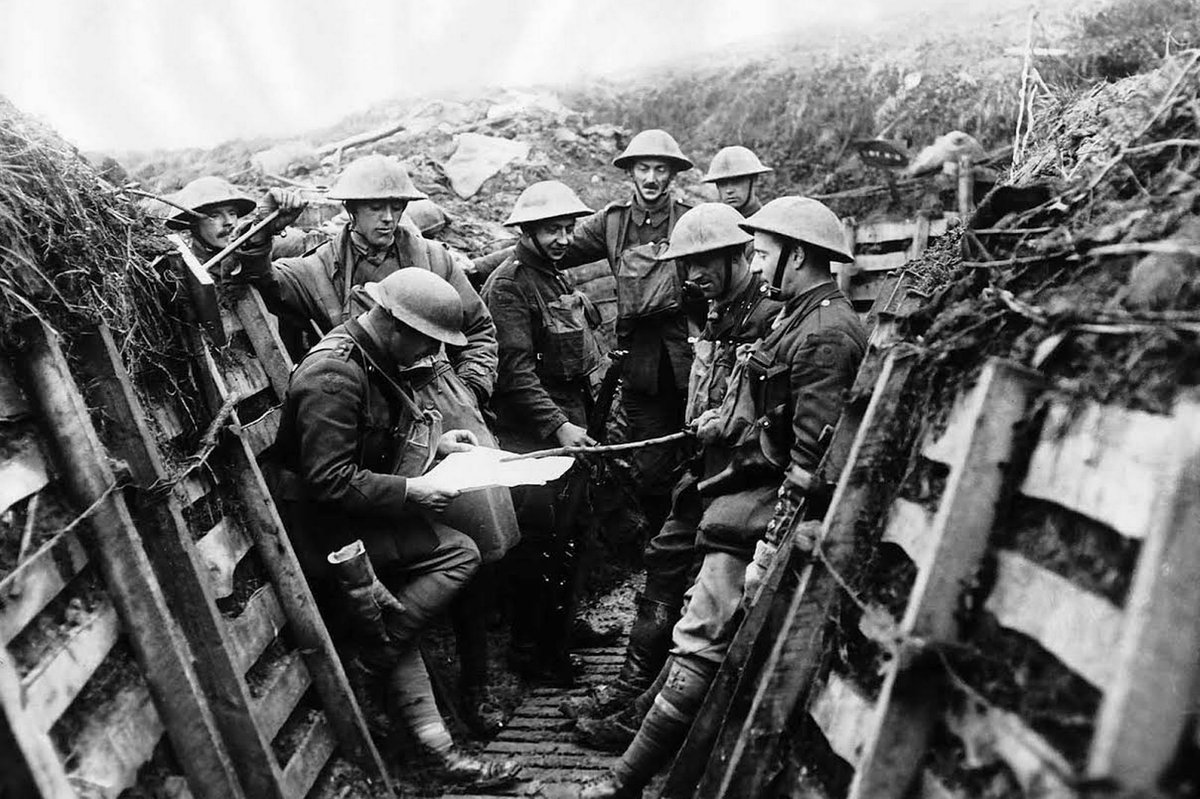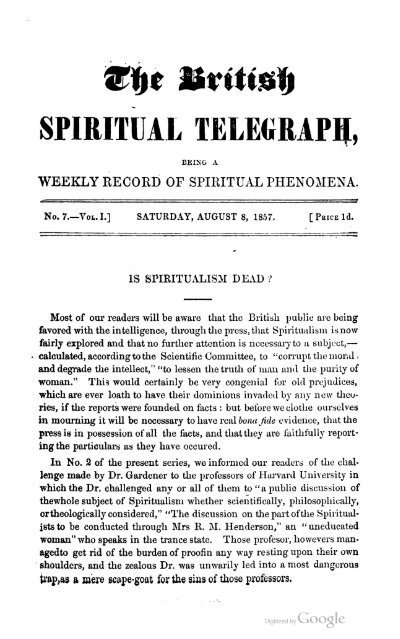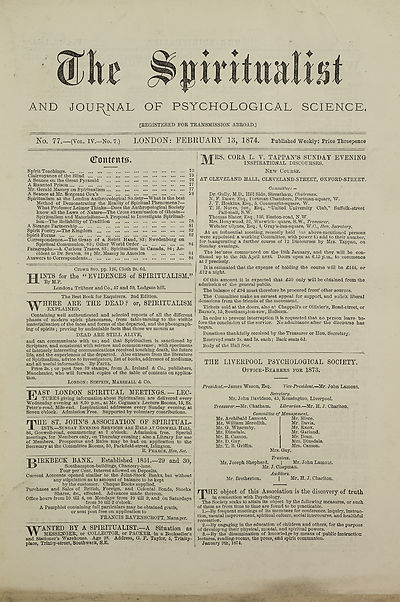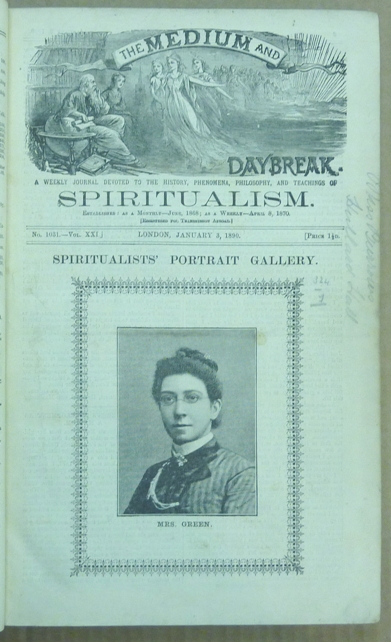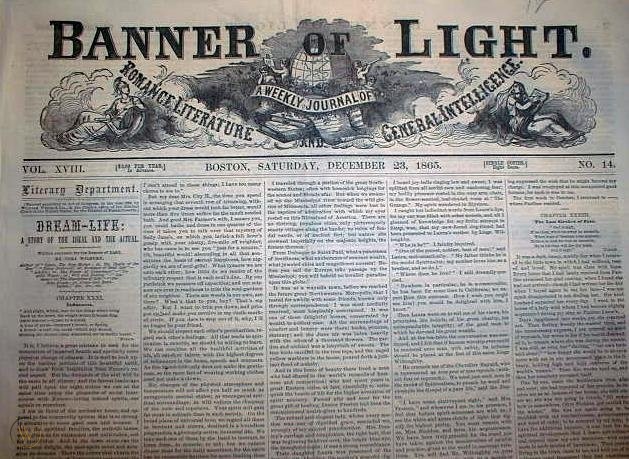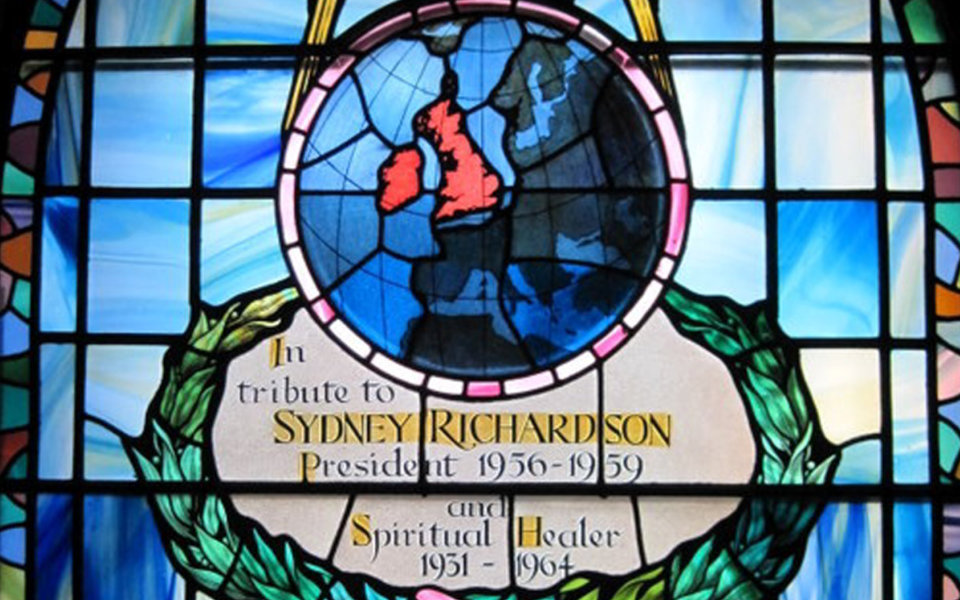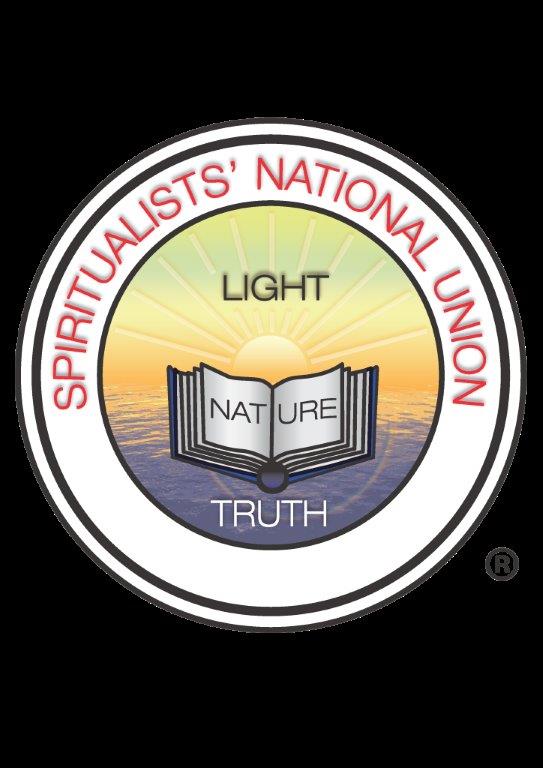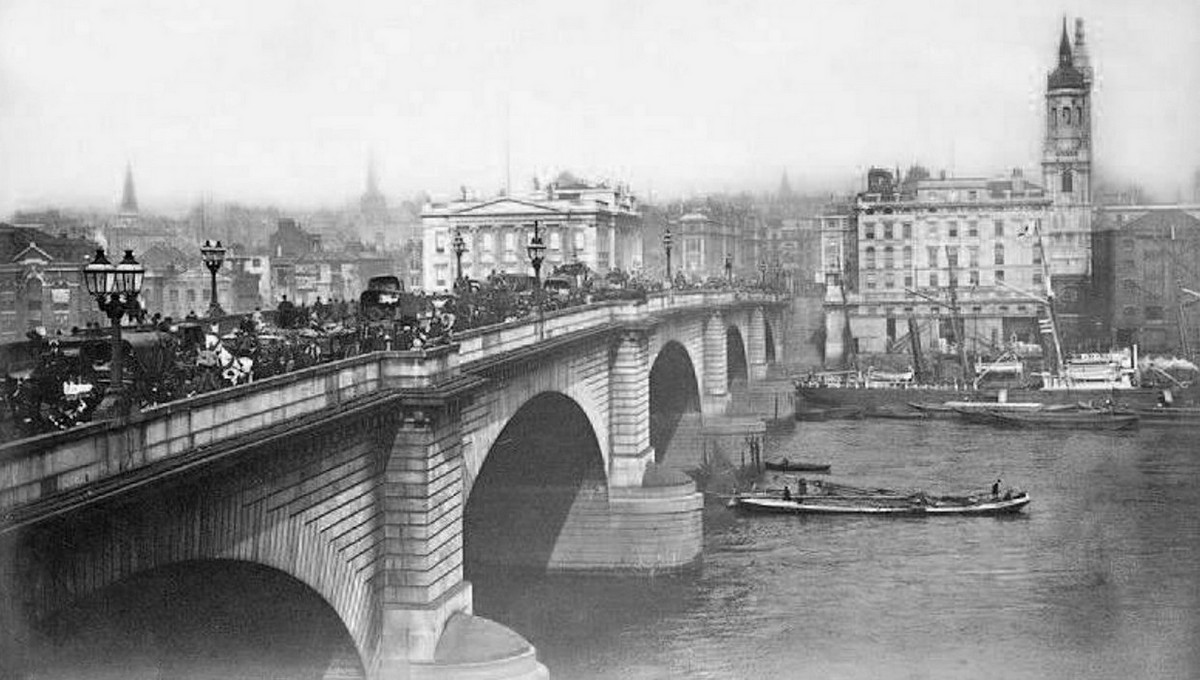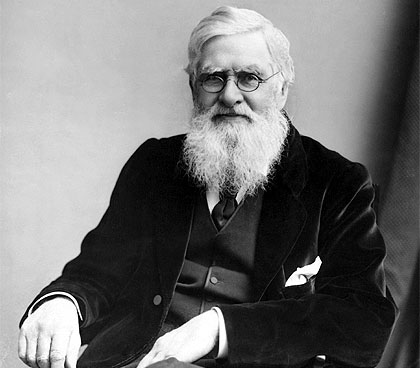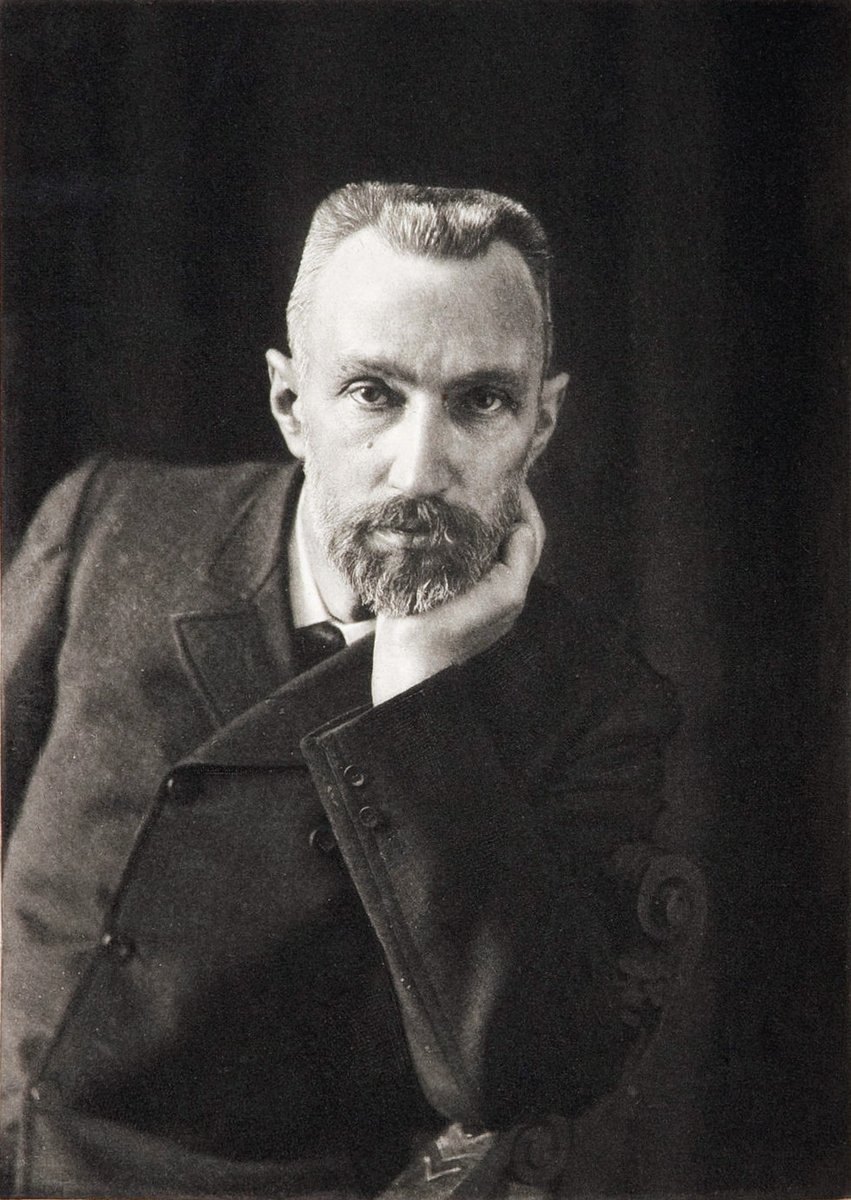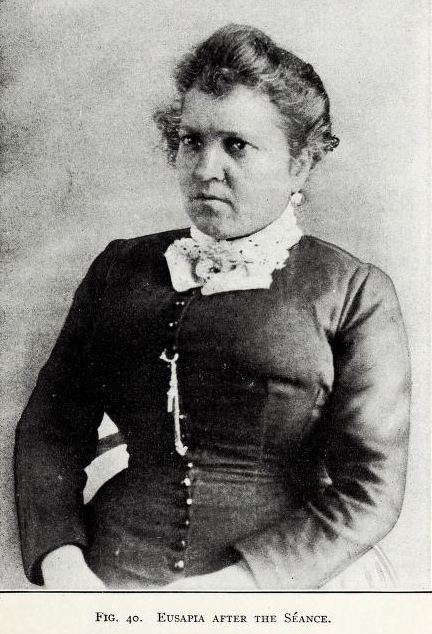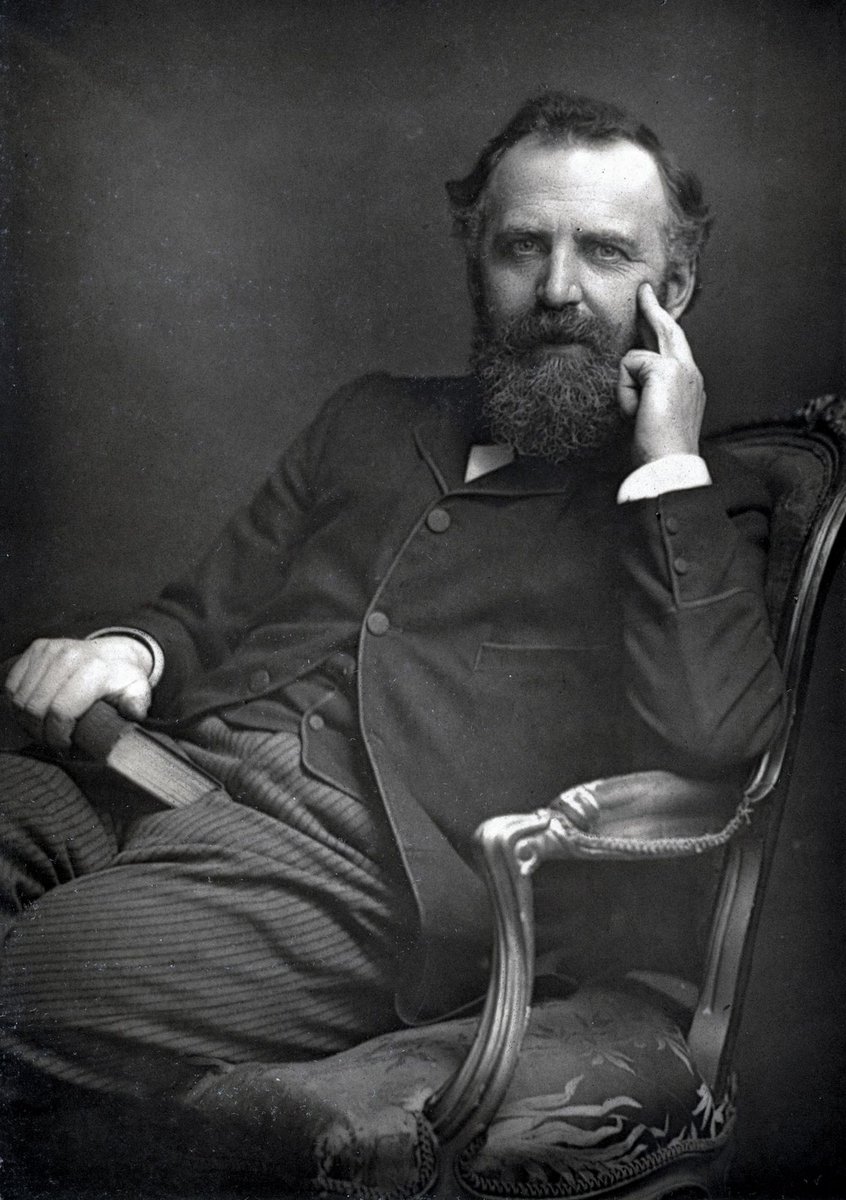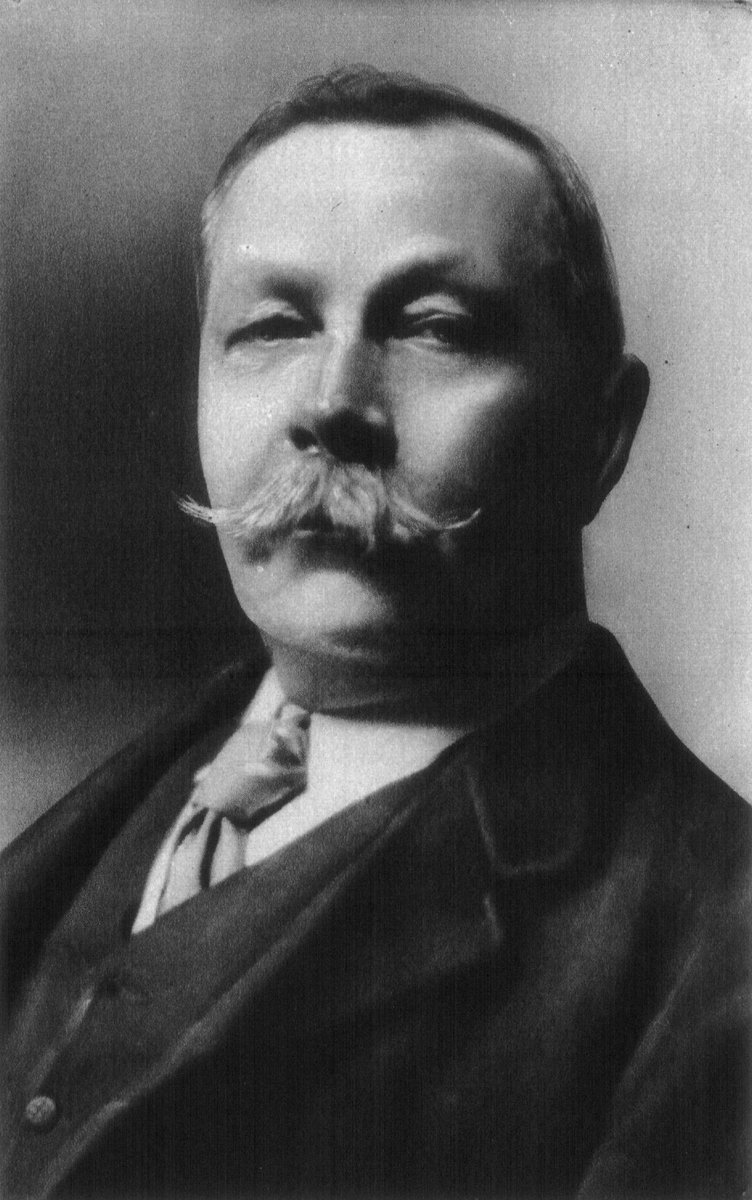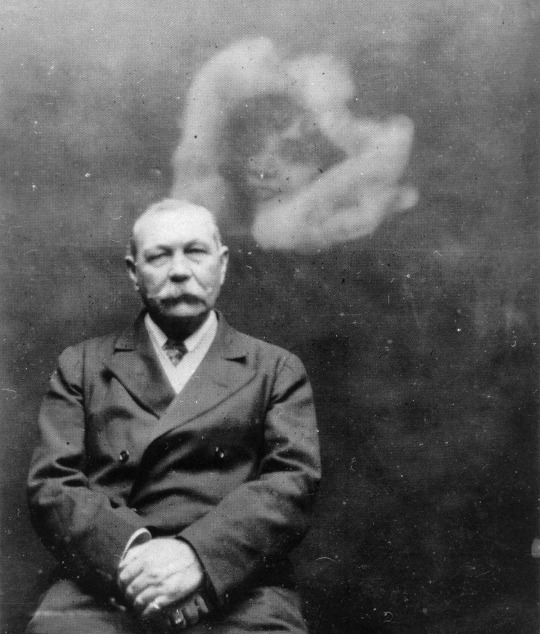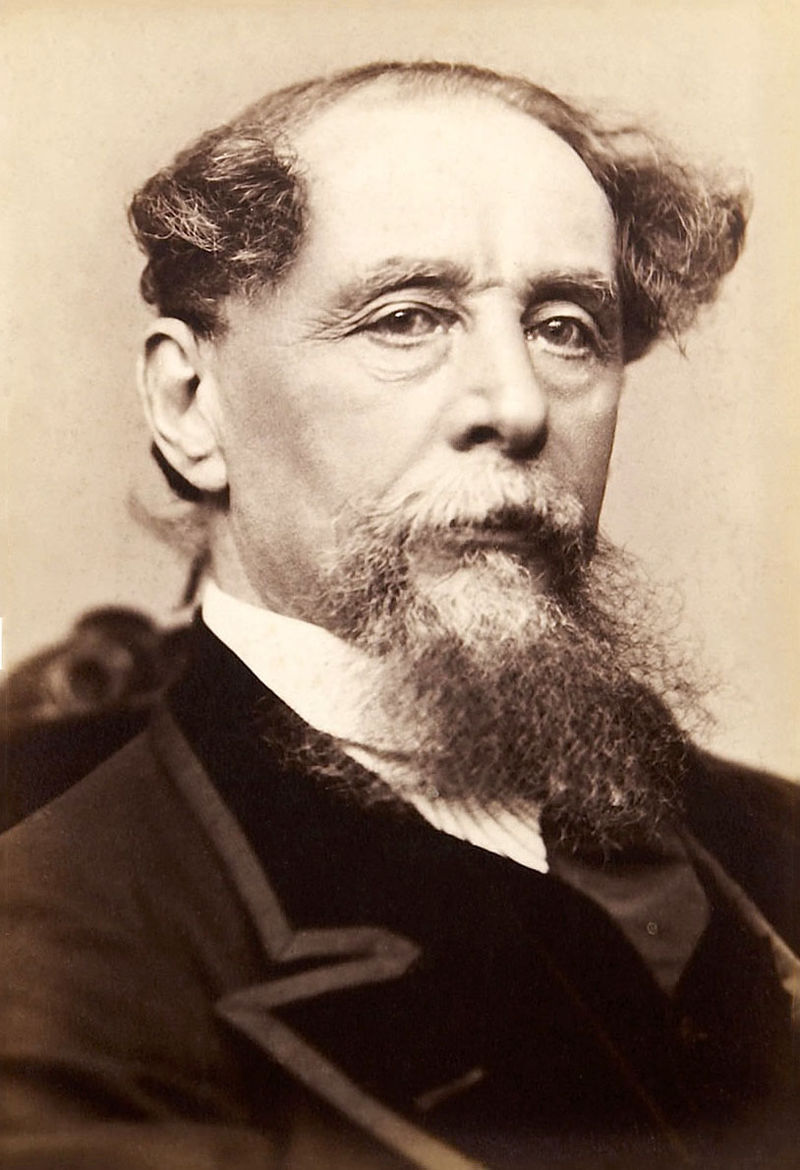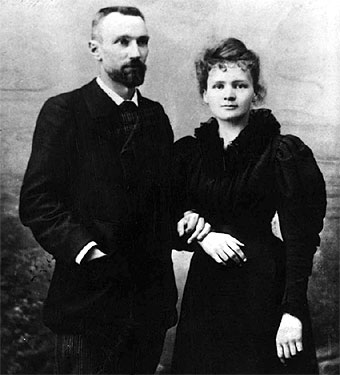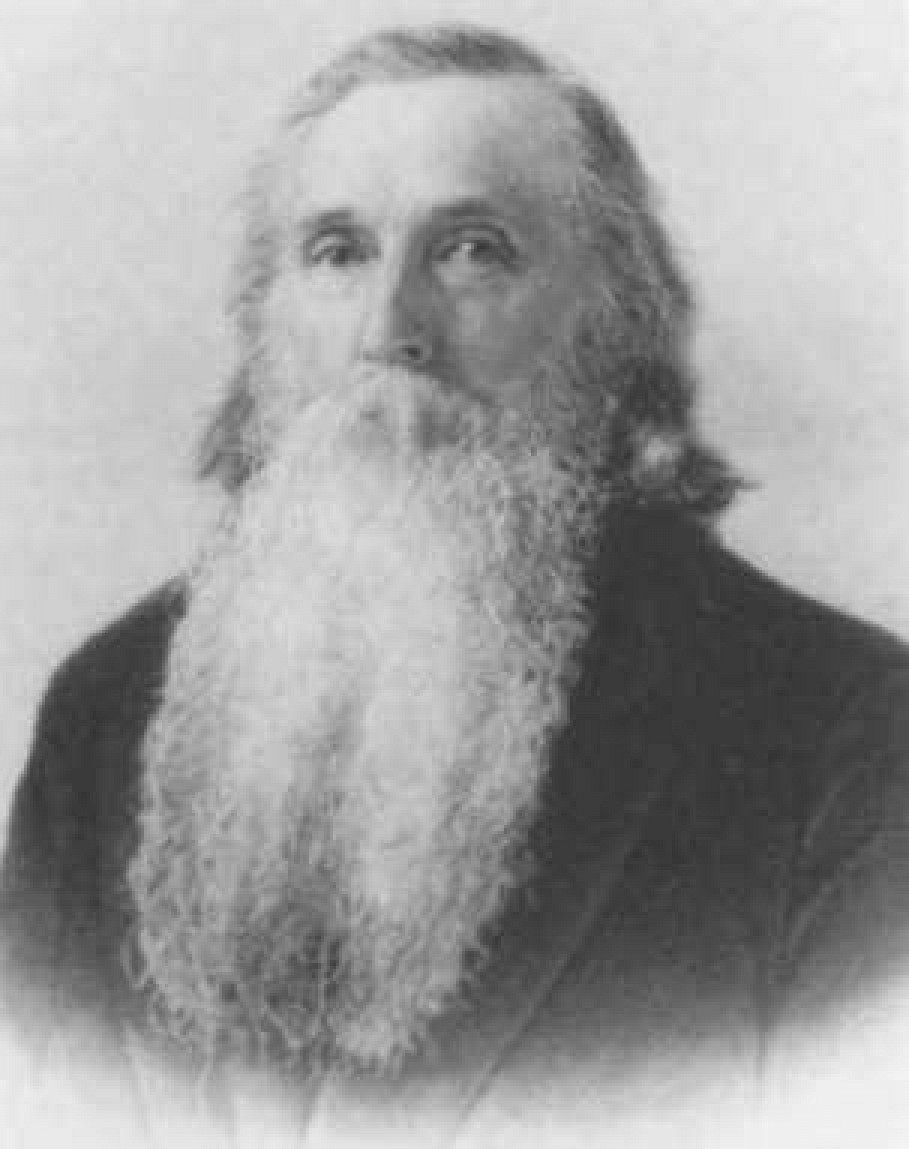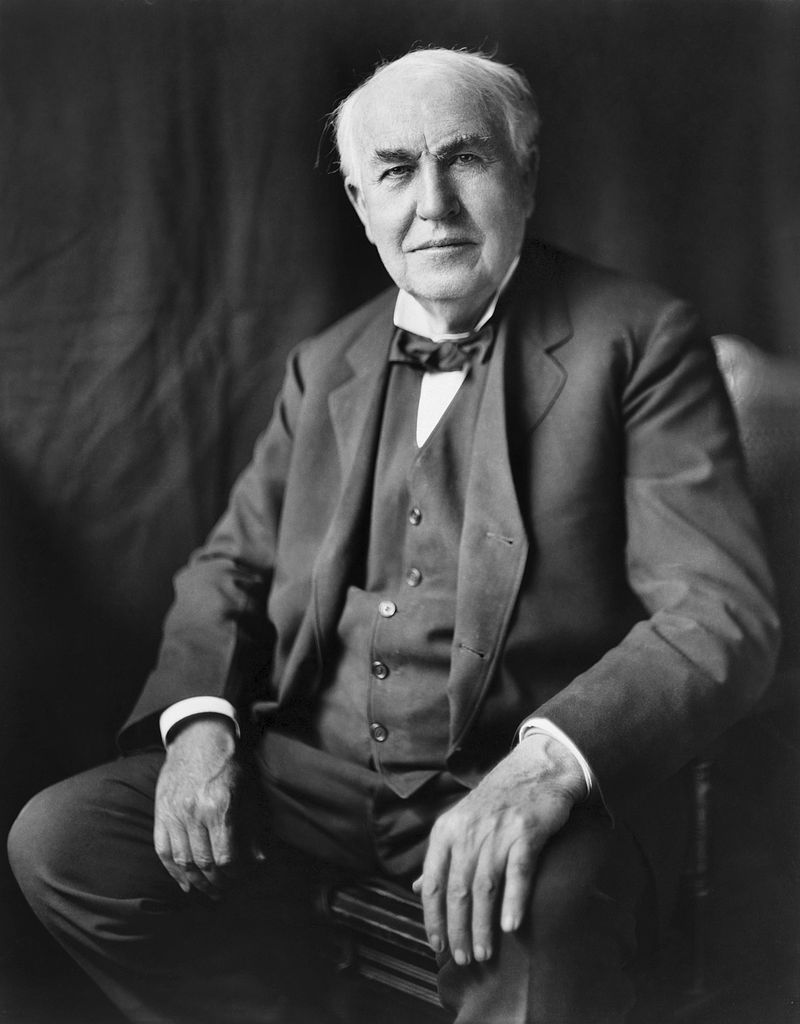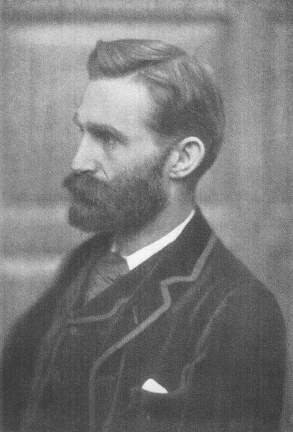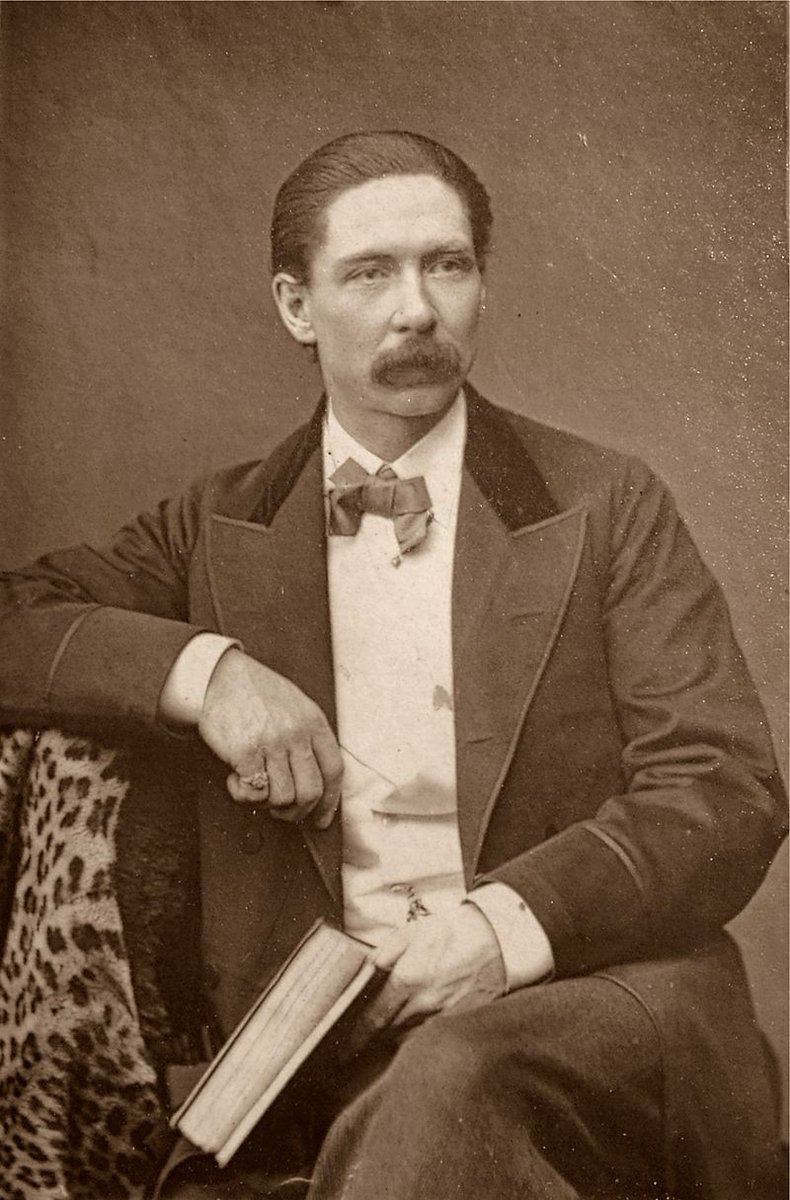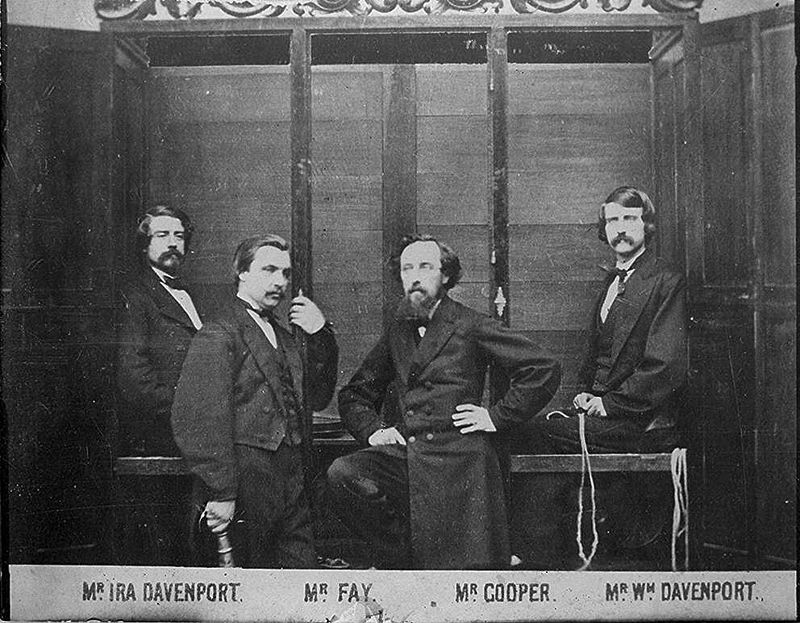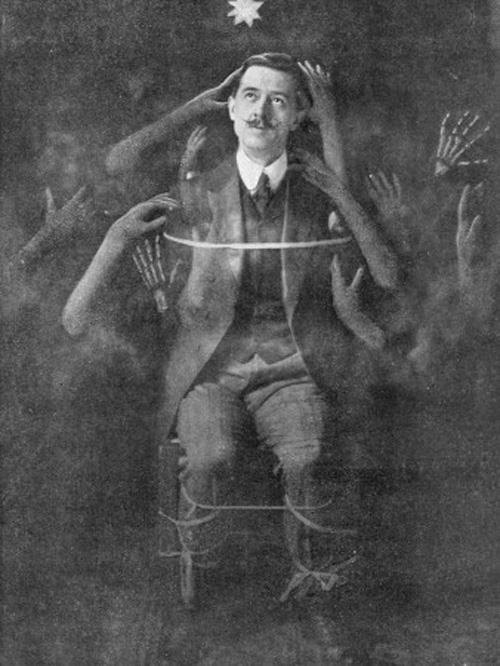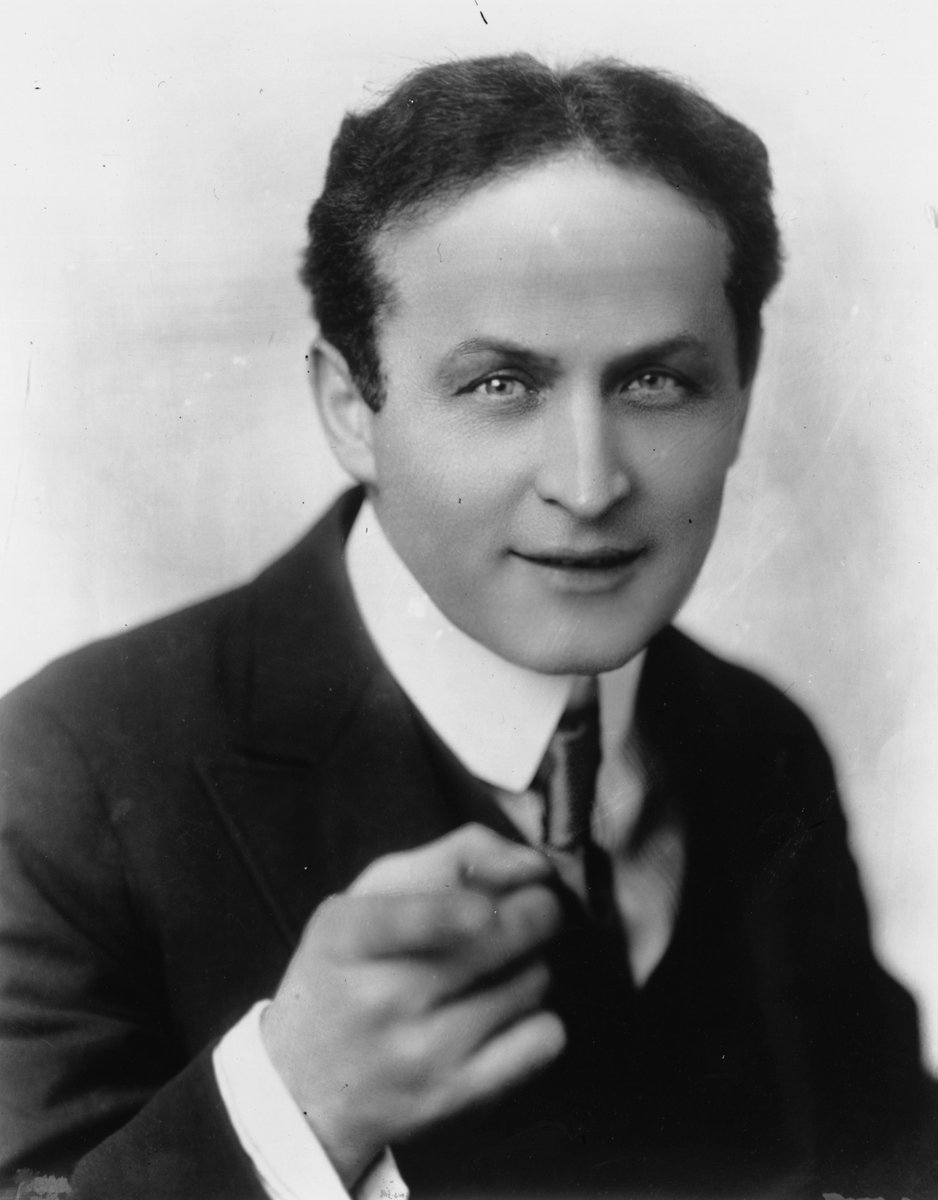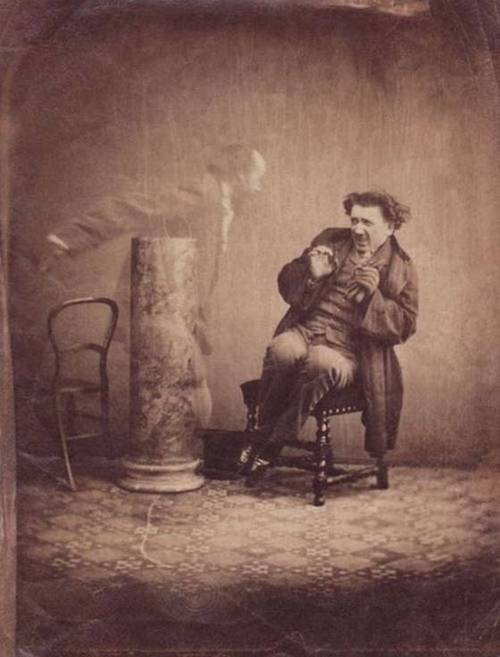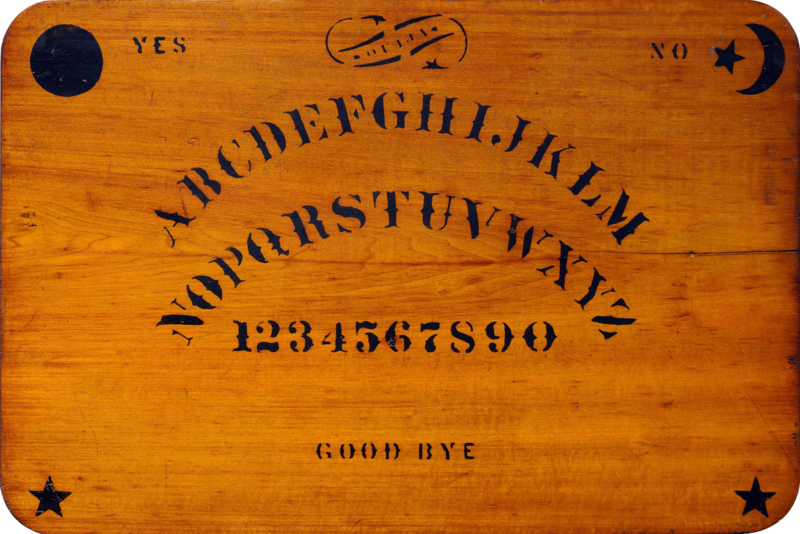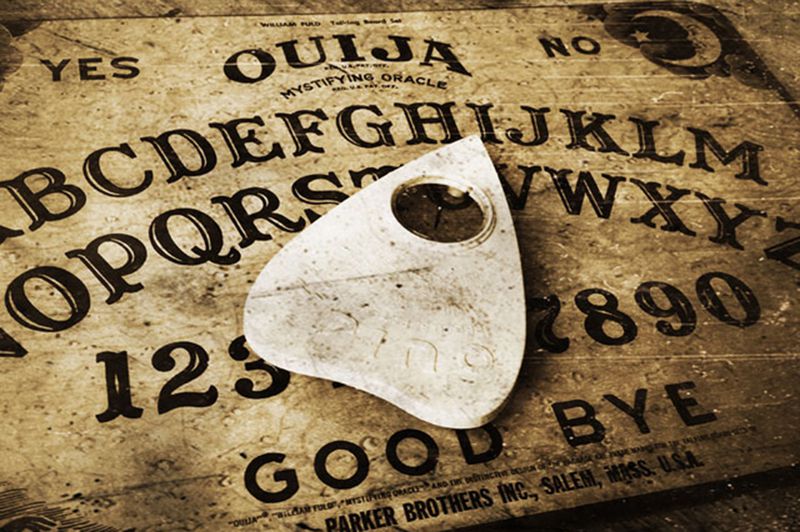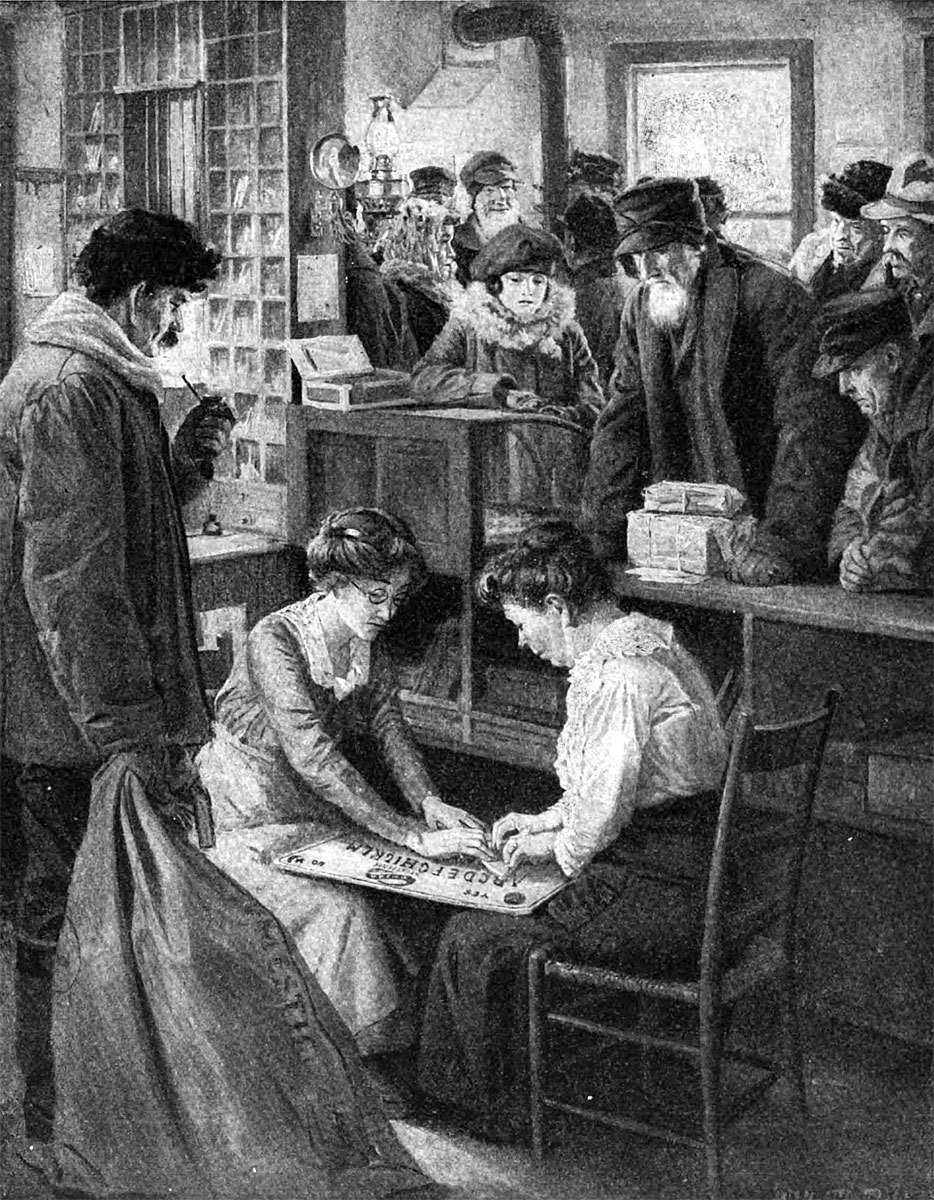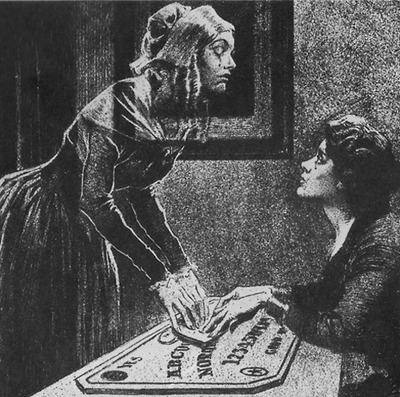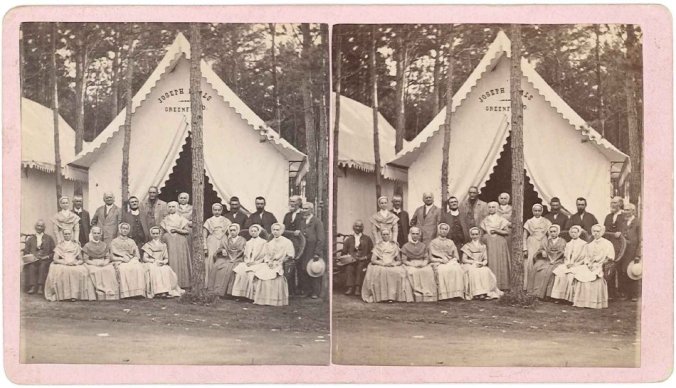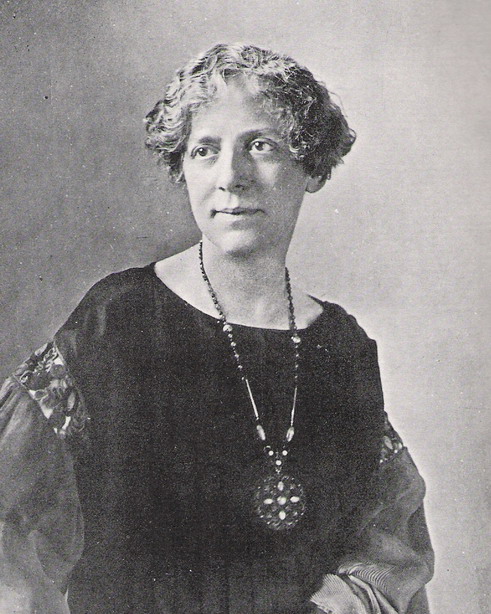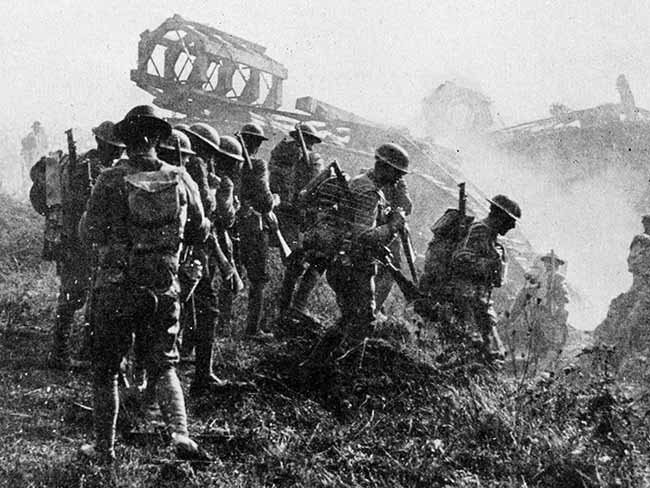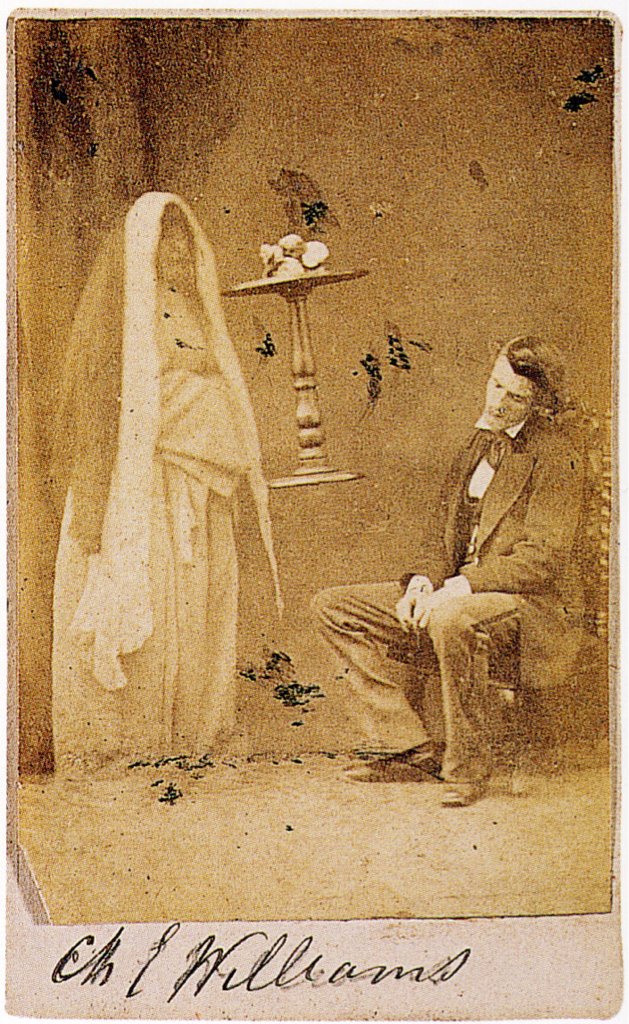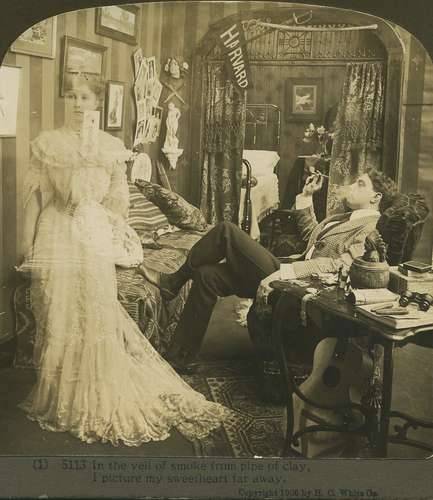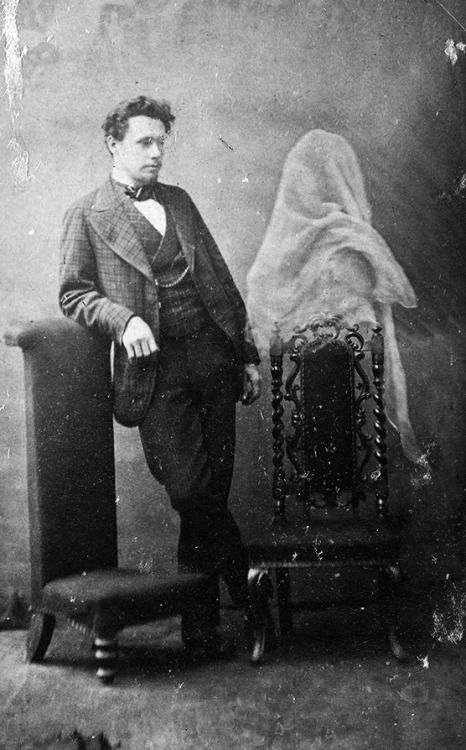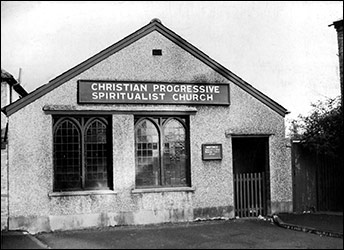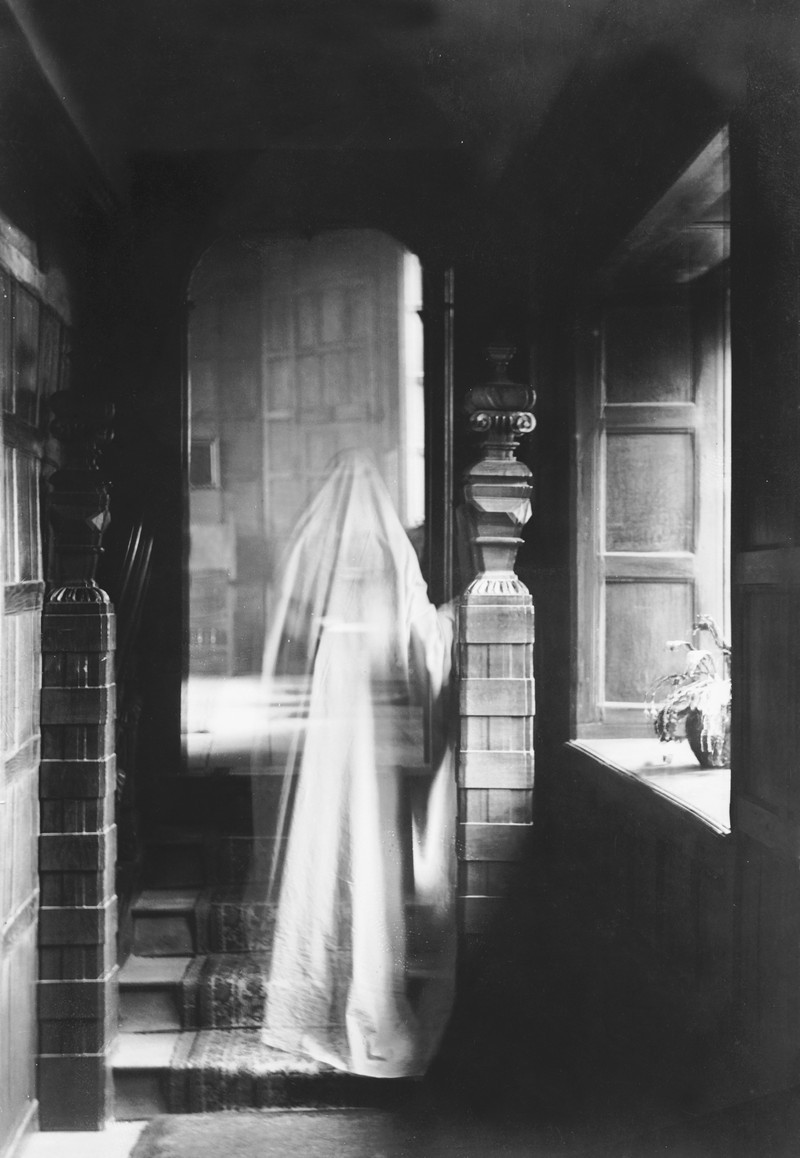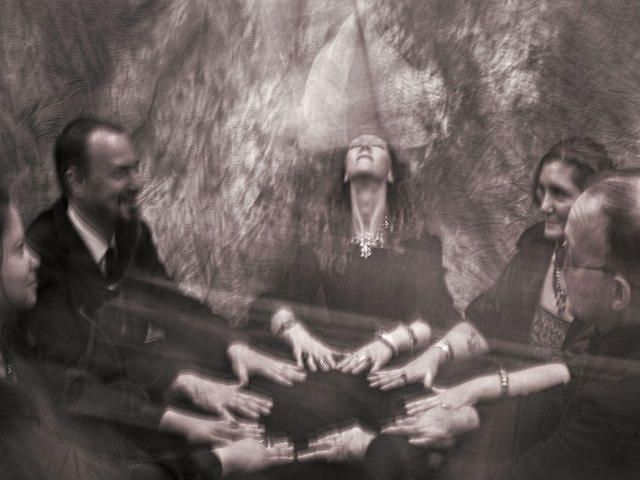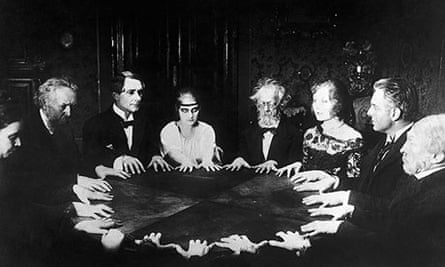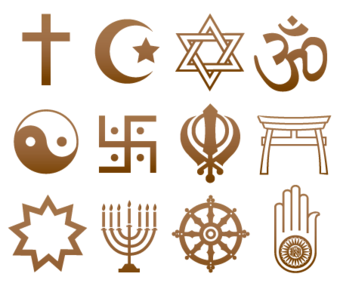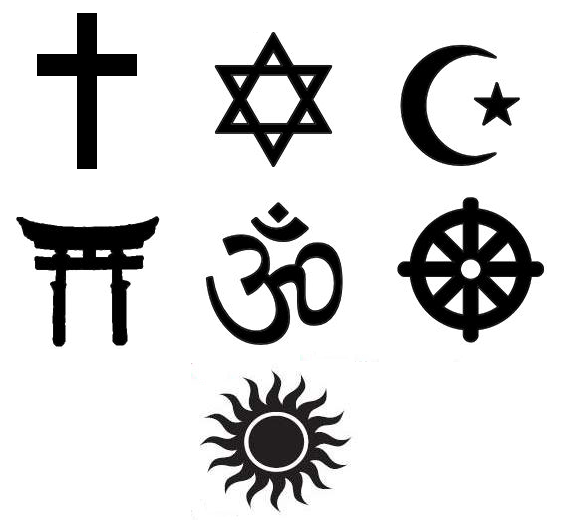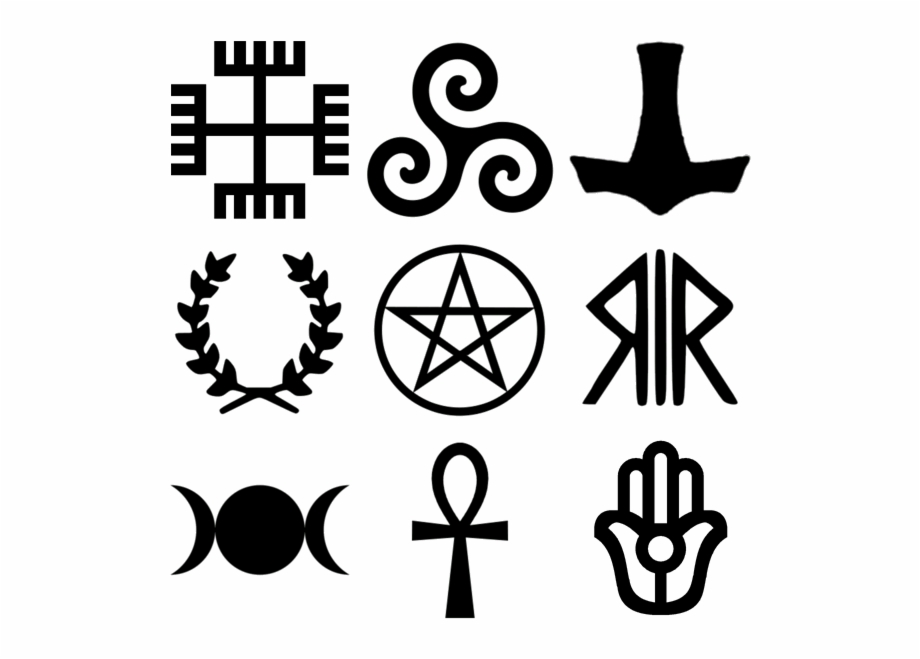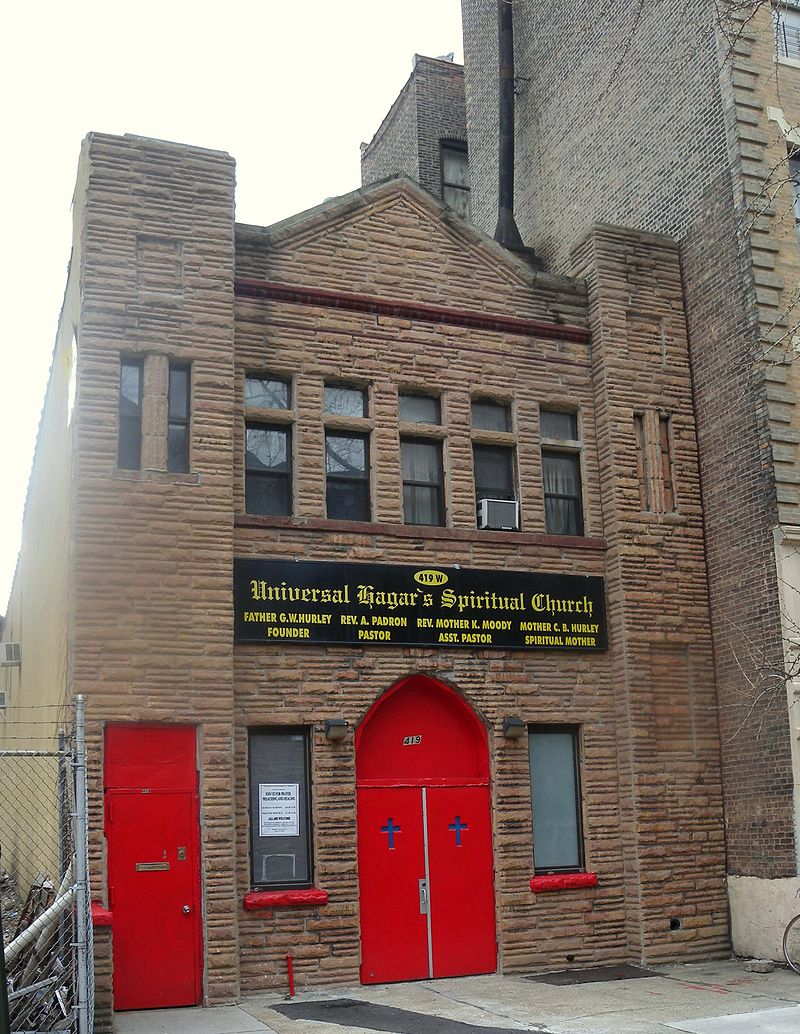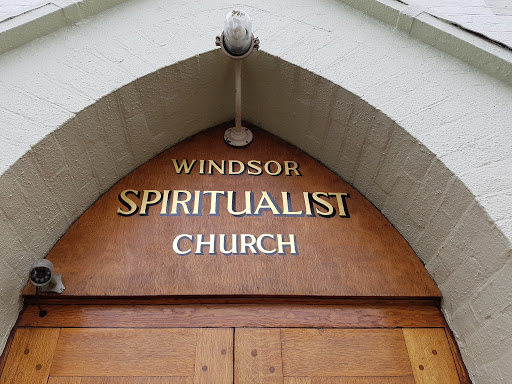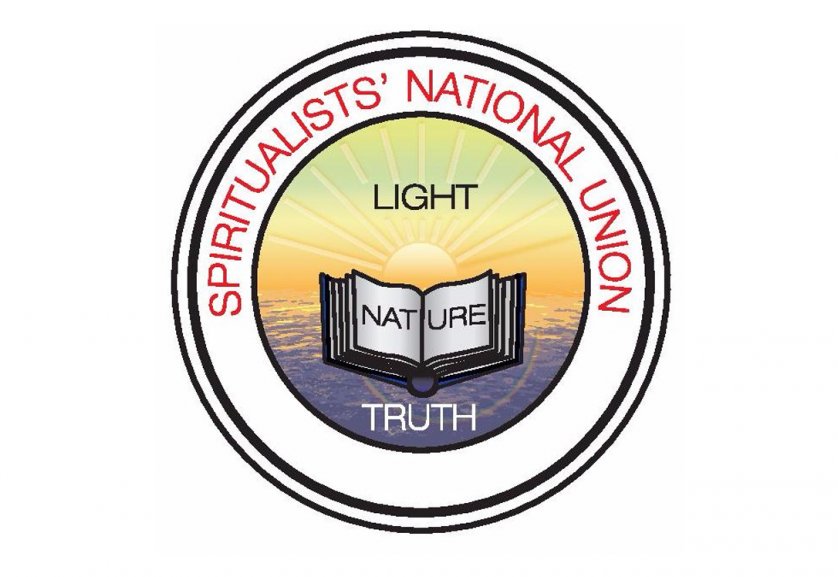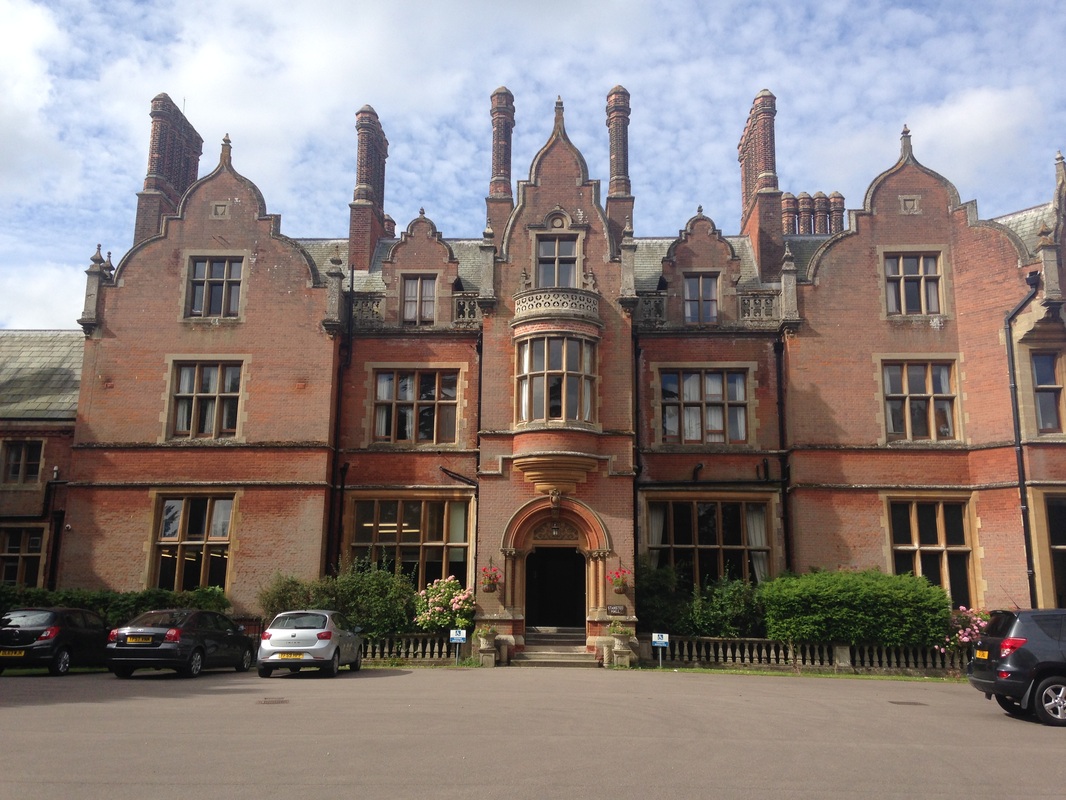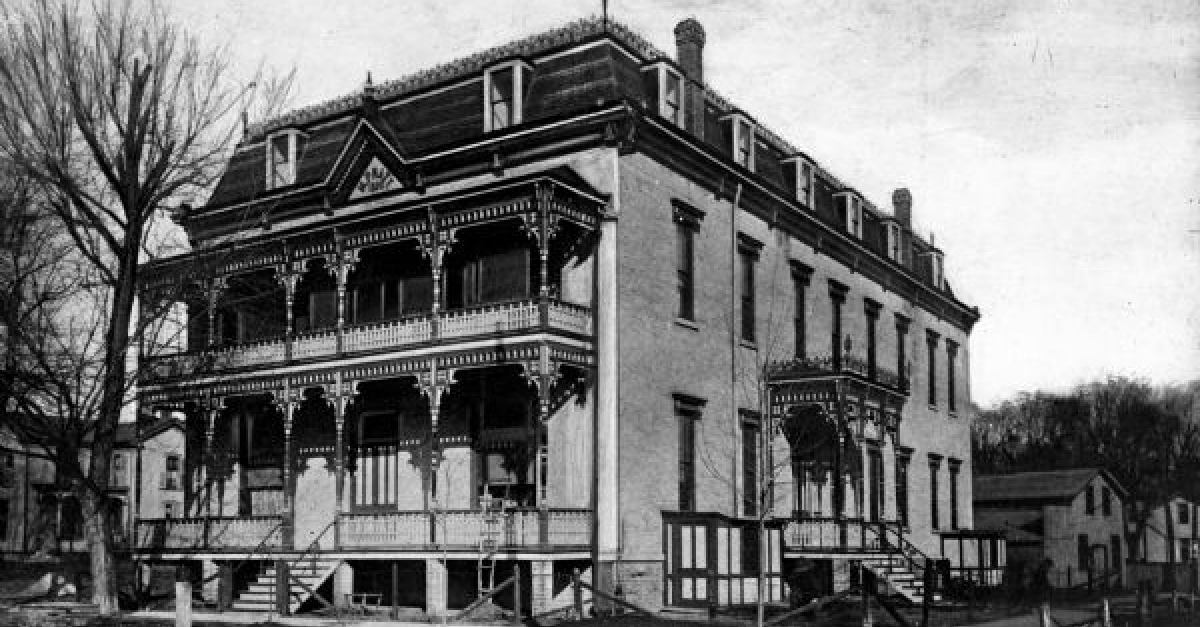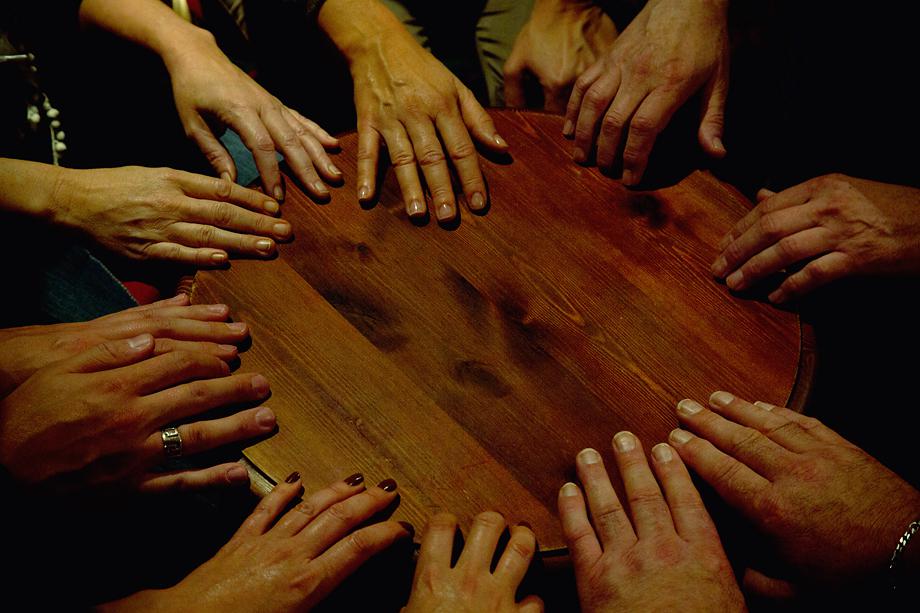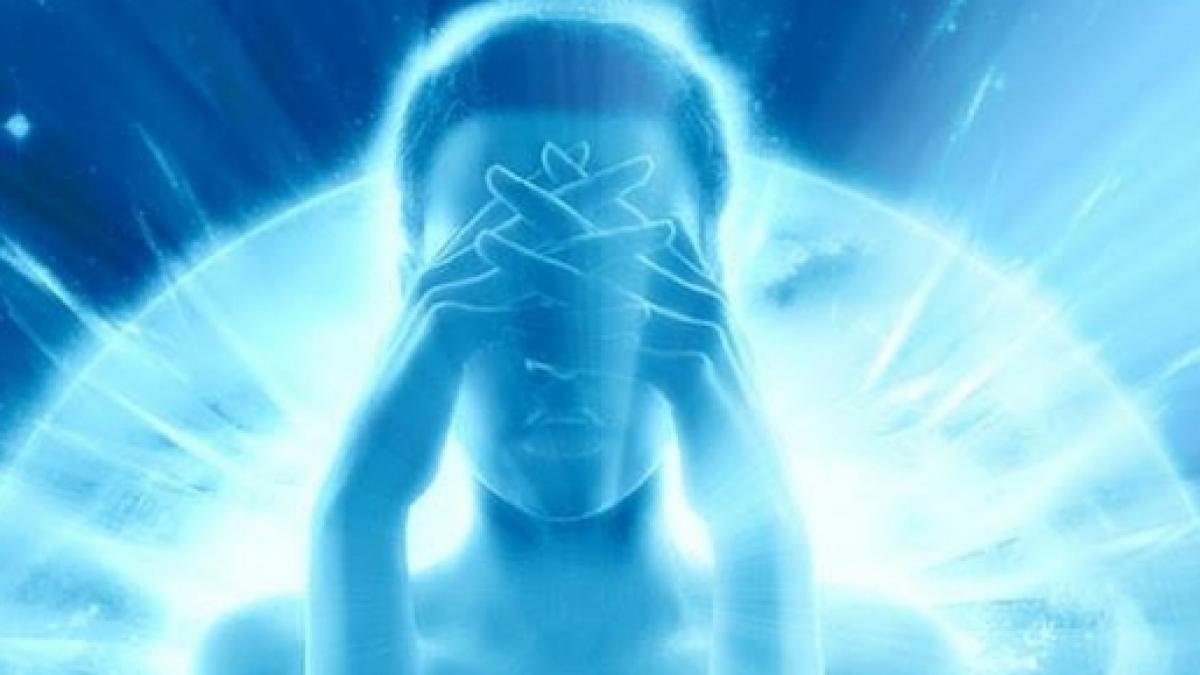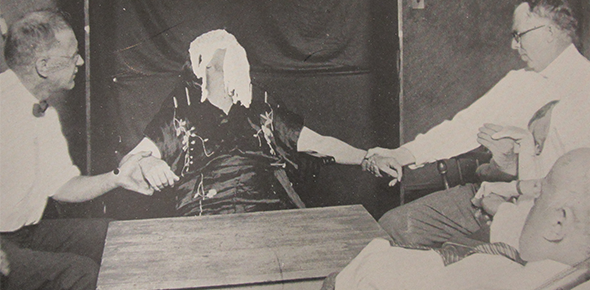Spiritualism is a religious movement based on the belief that the spirits of the dead exist and have both the ability and the inclination to communicate with the living.
The afterlife, or the "spirit world", is seen by spiritualists, not as a static place, but as one in which spirits continue to evolve.
These two beliefs—that contact with spirits is possible, and that spirits are more advanced than humans—lead spiritualists to a third belief: that spirits are capable of providing useful knowledge about moral and ethical issues, as well as about the nature of God.
Is not the same as Spiritism:
Spiritism is a religion, self-described as a spiritualistic philosophy, that started in the 19th century by the French educator Hippolyte Léon Denizard Rivail, who wrote books on "the nature, origin, and destiny of spirits, and their relation with the corporeal world"
Spiritism differs from Spiritualism primarily in that it believes in reincarnation. Spiritism was not accepted by UK and US Spiritualists of the day as they were undecided whether or not to agree with the Spiritist view on reincarnation.
Spiritualism developed and reached its peak growth in membership from the 1840s to the 1920s, especially in English-speaking countries.
By 1897, spiritualism was said to have more than eight million followers in the United States and Europe.
Although the Victorian era is often associated with scientific and technological progress, many Victorians were prone to the paranormal, supernatural and occult, of which the most popular forms
in the late Victorian period included mesmerism, clairvoyance, electro-biology, crystal-gazing, thought-reading, and above all, Spiritualism.
Spiritualism first appeared in the 1840s in the "Burned-over District" of upstate New York, where earlier religious movements such as Millerism and Mormonism had emerged during the Second Great Awakening,
although Millerism and Mormonism did not associate themselves with Spiritualism. In this environment, the writings of Emanuel Swedenborg and the teachings of Franz Mesmer provided an example for those seeking direct personal knowledge of the afterlife.
Swedenborg, who claimed to communicate with spirits while awake, described the structure of the spirit world. Two features of his view particularly resonated with the early Spiritualists:
first, that there is not a single Hell and a single Heaven, but rather a series of higher and lower heavens and hells;
second, that spirits are intermediates between God and humans, so that the divine sometimes uses them as a means of communication.
Although Swedenborg warned against seeking out spirit contact, his works seem to have inspired in others the desire to do so.
It is generally agreed that the modern Spiritualist movement began on April 1, 1848, in the village of Hydesville, New York, when two teenaged sisters, Margaret and Kate Fox, claimed that they had communicated with the ghost of a man
murdered at the house years before their family moved in. The spirit was said to have communicated through rapping noises, audible to onlookers.
They were joined by their third sister in no time. The evidence of the senses appealed to practically-minded Americans, and the Fox sisters became a sensation.
Amy and Isaac Post, Hicksite Quakers from Rochester, New York, had long been acquainted with the Fox family, and took the girls into their home in the late spring of 1848.
Immediately convinced of the veracity of the sisters& #39; communications, they became early converts and introduced the young mediums to their circle of radical Quaker friends.
Consequently, many early participants in Spiritualism were radical Quakers and others involved in the mid-nineteenth-century reforming movement.
The movement appealed to reformers, who fortuitously found that the spirits favoured such causes du jour as abolition of slavery, and equal rights for women. It also appealed to some who had a materialist orientation and rejected organized religion.
Such links with reform movements, often radically socialist, had already been prepared in the 1840s, as the example of Andrew Jackson Davis shows. After 1848, many socialists became ardent spiritualists or occultists
It was the time when great social reformers and philanthropists rose and this is when spiritualism appealed to the people because it gave importance to a personal experience to spirits and the unswerving knowledge of the afterlife.
Modern Spiritualism, a & #39;strange and fascinating American import& #39;, emerged in Britain in 1852, when the American Maria B. Hayden (1826-1883) visited London and offered her services as the first working spiritualist medium.
Although Maria Hayden attracted a lot of criticism and antipathy, she carried on with her spiritual works by holding seances and demonstrating mediumship.
Public interest continued to grow and the first spiritualist publication was “The Yorkshire Spiritual Telegraph” published in 1855.
Soon the word spread and a new religion emerged. Even after the confession of Fox sisters in 1888 that they had faked everything, the movement could not be crushed.
In the 1860s, Spiritualism became part of Victorian subculture with its mediums, specialist newspapers, pamphlets, treatises, societies, private and public séances which included table rapping, table tipping, automatic writing, levitation, and other communications with spirits.
In 1861, the year when Prince Albert died of typhoid, a thirteen-year-old boy living in Leicester, Robert James Lees, who took part in a family séance, passed a message from Albert to the Queen in which he called her by the pet name known only to her and her husband.
Lees was invited to give séances at Windsor Castle during which Albert was called. After her death Queen Victoria was reported to send messages to her last surviving daughter, Princess Louise, through the medium Lesley Flint.
Spiritualism was mainly a middle- and upper-class movement. American Spiritualists would meet in private homes for séances, at lecture halls for trance lectures, at state or national conventions, and at summer camps attended by thousands.
It should be noted that Victorian Spiritualism was particularly attractive to women because they were regarded as more spiritual than men.
A female medium was often considered a better communicator than a male medium because she had allegedly a better predisposition to spiritual perfectability. Interestingly, spiritualists were concerned with the Woman Question and called for the recognition of women& #39;s rights.
The most popular trance lecturer prior to the American Civil War was Cora L. V. Scott. Young and beautiful, her appearance on stage fascinated men.
Her audiences were struck by the contrast between her physical girlishness and the eloquence with which she spoke of spiritual matters, and found in that contrast support for the notion that spirits were speaking through her.
Another famous woman Spiritualist was Achsa W. Sprague, who was born November 17, 1827, in Plymouth Notch, Vermont. At the age of 20, she became ill with rheumatic fever and credited her eventual recovery to intercession by spirits.
An extremely popular trance lecturer, she traveled about the United States until her death in 1861. Sprague was an abolitionist and an advocate of women& #39;s rights.
Yet another prominent Spiritualist and trance medium prior to the Civil War was Paschal Beverly Randolph, a man of mixed race, who also played a part in the abolitionist movement.
Nevertheless, many abolitionists and reformers held themselves aloof from the Spiritualist movement; among the skeptics was the famous abolitionist Frederick Douglass.
Despite numerous instances of chicanery, the appeal of Spiritualism was strong. Prominent in the ranks of its adherents were those grieving the death of a loved one.
Many families during the time of the American Civil War had seen their men go off and never return. Images of the battlefield,produced through the new medium of photography,demonstrated that their loved ones had not only died in overwhelmingly huge numbers, but horribly as well.
One well known case is that of Mary Todd Lincoln who, grieving the loss of her son, organized séances in the White House which were attended by her husband, President Abraham Lincoln.
The surge of Spiritualism during this time, and later during World War I, was a direct response to those massive battlefield casualties
In 1863, James Burns established the Progressive Library and Spiritualist Institution in Southampton Row in Holborn, London.
The Spiritualist press in the late Victorian era included the British Spiritualist Telegraph, the Spiritualist, Human Nature, Medium and Daybreak, Two Worlds, and Banner of Light.
Together with the emergence of the Spiritualist press, a number of Spiritualist societies were established in Great Britain, such as The Spiritualist Association of Great Britain (1872),
The British National Association of Spiritualists (1873), The National Spiritualists& #39; Federation (1890), and The Spiritualists& #39; National Union (1901).
London had the greatest number of Spiritualist societies: Charing Cross Spirit-Power Circle (1857), Christian Spiritual Enquirers in Clerkenwell, the East London Association of Spiritualists, the Marylebone Spiritualist Association, and others.
A number of scientists who investigated the phenomenon also became converts. They included chemist and physicist William Crookes, evolutionary biologist Alfred Russel Wallace and physicist Sir Oliver Lodge.
Nobel laureate Pierre Curie was impressed by the mediumistic performances of Eusapia Palladino and advocated their scientific study. Other prominent adherents included journalist and pacifist William T. Stead and physician and author Arthur Conan Doyle.
Founded in London in 1862, its focus was the scientific study of alleged paranormal activities in order to prove (or refute) the existence of paranormal phenomena. Famous members of the club included Charles Dickens, Sir William Crookes and Sir William F. Barrett.
The Paris séances of Eusapia Palladino were attended by an enthusiastic Pierre Curie and a dubious Marie Curie. The celebrated New York City physician, John Franklin Gray, was a prominent spiritualist.
Thomas Edison wanted to develop a "spirit phone", an ethereal device that would summon to the living the voices of the dead and record them for posterity.
The claims of Spiritualists and others as to the reality of spirits were investigated by the Society for Psychical Research, founded in London in 1882. The society set up a Committee on Haunted Houses.
Prominent investigators who exposed cases of fraud came from a variety of backgrounds, including professional researchers such as Frank Podmore of the Society for Psychical Research and Harry Price of the National Laboratory of Psychical Research,
and professional conjurers such as John Nevil Maskelyne. Maskelyne exposed the Davenport brothers by appearing in the audience during their shows and explaining how the trick was done.
Magicians and writers on magic have a long history of exposing the fraudulent methods of mediumship.
During the 1920s, professional magician Harry Houdini undertook a well-publicised campaign to expose fraudulent mediums; he was adamant that "Up to the present time everything that I have investigated has been the result of deluded brains."
The psychical researcher Hereward Carrington exposed fraudulent mediums& #39; tricks, such as those used in slate-writing, table-turning, trumpet mediumship, materializations, sealed-letter reading, and spirit photography
The ouija (also known as a spirit board or talking board) is a flat board marked with the letters of the alphabet, the numbers 0–9, the words "yes", "no", occasionally "hello" and "goodbye", along with various symbols and graphics.
It uses a planchette (small heart-shaped piece of wood or plastic) as a movable indicator to spell out messages during a séance. Participants place their fingers on the planchette, and it is moved about the board to spell out words.
The ouija itself was created and named in Baltimore, Maryland, in 1890, but the use of talking boards was so common by 1886 that news reported the phenomenon taking over the spiritualists& #39; camps in Ohio.
Following its commercial introduction by businessman Elijah Bond on July 1, 1890, the Ouija board was regarded as an innocent parlor game unrelated to the occult until American spiritualist Pearl Curran popularized its use as a divining tool during World War I.
The Spiritualist movement was extremely individualistic, with each person relying on his or her own experiences and reading to discern the nature of the afterlife. Organisation was therefore slow to appear, and when it did it was resisted by mediums and trance lecturers.
As the Spiritualist movement began to fade, partly through the publicity of fraud accusations and partly through the appeal of religious movements such as Christian science, the Spiritualist Church was organised.
Spiritualists reacted with an uncertainty to the theories of evolution in the late 19th and early 20th century. Broadly speaking the concept of evolution fitted the spiritualist thought of the progressive development of humanity.
At the same time, however, the belief in the animal origins of humanity threatened the foundation of the immortality of the spirit, for if humans had not been created by God, it was scarcely plausible that they would be specially endowed with spirits.
This led to Spiritualists embracing spiritual evolution.
After the 1920s, Spiritualism evolved in three different directions, all of which exist today.
-Syncretism: The first of these continued the tradition of individual practitioners, organised in circles centered on a medium and clients, without any hierarchy or dogma.
Already by the late 19th century Spiritualism had become increasingly syncretic, a natural development in a movement without central authority or dogma. Today, among these unorganised circles, Spiritualism is similar to the new age movement.
Today& #39;s syncretic Spiritualists are quite heterogeneous in their beliefs regarding issues such as reincarnation or the existence of God.
Some appropriate new age and neo-pagan beliefs, while others call themselves "Christian spiritualists", continuing with the tradition of cautiously incorporating spiritualist experiences into their Christian faith.
-Spiritualist church: The second direction taken has been to adopt formal organization, patterned after Christian denominations, with established liturgies and a set of seven principles, and training requirements for mediums.
In the United States the spiritualist churches are primarily affiliated either with the National Spiritualist Association of Churches or the loosely allied group of denominations known as the spiritual church movement;
in the U.K. the predominant organization is the Spiritualists& #39; National Union, founded in 1890.
Formal education in spiritualist practice emerged in 1920s, with organizations like the William T. Stead Center in Chicago, Illinois, and continue today with the Arthur Findlay College at Stansted Hall in England, and the Morris Pratt Institute in Wisconsin, United States.
Diversity of belief among organized Spiritualists has led to a few schisms, the most notable occurring in the U.K. in 1957 between those who held the movement to be a religion sui generis (of its own with unique characteristics),
and a minority who held it to be a denomination within Christianity. In the United States, this distinction can be seen between the less Christian organization, the National Spiritualist Association of Churches, and the more Christian spiritual church movement.
The practice of organized Spiritualism today resembles that of any other religion, having discarded most showmanship, particularly those elements resembling the conjurer& #39;s art.
There is thus a much greater emphasis on "mental" mediumship and an almost complete avoidance of the apparently miraculous "materializing" mediumship that so fascinated early believers such as Arthur Conan Doyle.
-Psychical research: Already as early as 1882, with the founding of the Society for Psychical Research (SPR), parapsychologists emerged to investigate spiritualist claims.
The SPR& #39;s investigations into Spiritualism exposed many fraudulent mediums which contributed to the decline of interest in physical mediumship.
Thank you for reading until the end! I hope you found this thread interesting

 Read on Twitter
Read on Twitter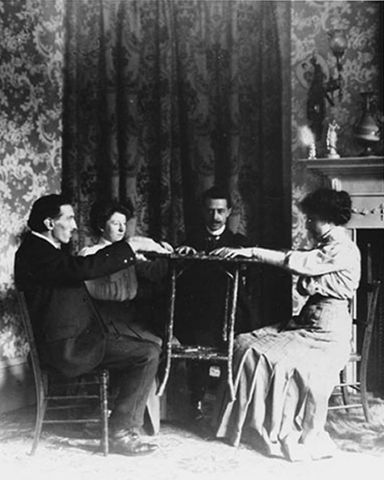 Spiritualism in the Victorian/Edwardian era: A THREAD https://abs.twimg.com/emoji/v2/... draggable="false" alt="👻" title="Geist" aria-label="Emoji: Geist">" title="https://abs.twimg.com/emoji/v2/... draggable="false" alt="👻" title="Geist" aria-label="Emoji: Geist"> Spiritualism in the Victorian/Edwardian era: A THREAD https://abs.twimg.com/emoji/v2/... draggable="false" alt="👻" title="Geist" aria-label="Emoji: Geist">">
Spiritualism in the Victorian/Edwardian era: A THREAD https://abs.twimg.com/emoji/v2/... draggable="false" alt="👻" title="Geist" aria-label="Emoji: Geist">" title="https://abs.twimg.com/emoji/v2/... draggable="false" alt="👻" title="Geist" aria-label="Emoji: Geist"> Spiritualism in the Victorian/Edwardian era: A THREAD https://abs.twimg.com/emoji/v2/... draggable="false" alt="👻" title="Geist" aria-label="Emoji: Geist">">
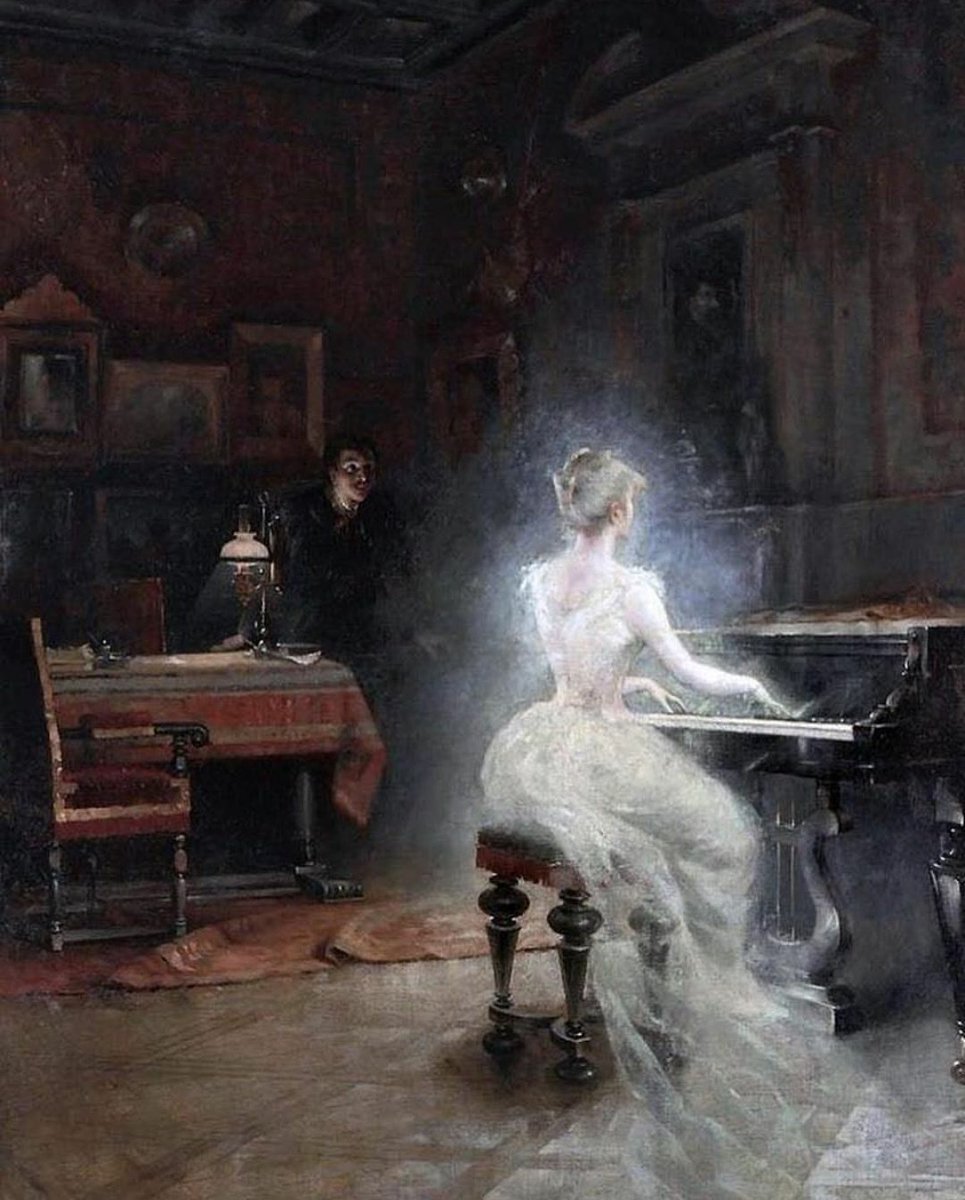 Spiritualism in the Victorian/Edwardian era: A THREAD https://abs.twimg.com/emoji/v2/... draggable="false" alt="👻" title="Geist" aria-label="Emoji: Geist">" title="https://abs.twimg.com/emoji/v2/... draggable="false" alt="👻" title="Geist" aria-label="Emoji: Geist"> Spiritualism in the Victorian/Edwardian era: A THREAD https://abs.twimg.com/emoji/v2/... draggable="false" alt="👻" title="Geist" aria-label="Emoji: Geist">">
Spiritualism in the Victorian/Edwardian era: A THREAD https://abs.twimg.com/emoji/v2/... draggable="false" alt="👻" title="Geist" aria-label="Emoji: Geist">" title="https://abs.twimg.com/emoji/v2/... draggable="false" alt="👻" title="Geist" aria-label="Emoji: Geist"> Spiritualism in the Victorian/Edwardian era: A THREAD https://abs.twimg.com/emoji/v2/... draggable="false" alt="👻" title="Geist" aria-label="Emoji: Geist">">
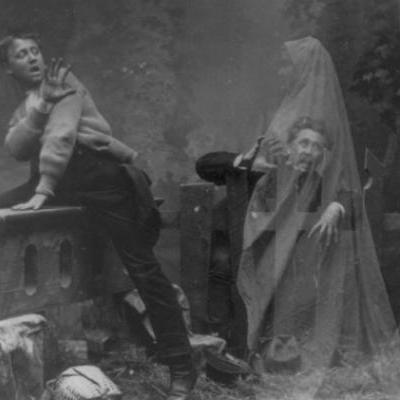 Spiritualism in the Victorian/Edwardian era: A THREAD https://abs.twimg.com/emoji/v2/... draggable="false" alt="👻" title="Geist" aria-label="Emoji: Geist">" title="https://abs.twimg.com/emoji/v2/... draggable="false" alt="👻" title="Geist" aria-label="Emoji: Geist"> Spiritualism in the Victorian/Edwardian era: A THREAD https://abs.twimg.com/emoji/v2/... draggable="false" alt="👻" title="Geist" aria-label="Emoji: Geist">">
Spiritualism in the Victorian/Edwardian era: A THREAD https://abs.twimg.com/emoji/v2/... draggable="false" alt="👻" title="Geist" aria-label="Emoji: Geist">" title="https://abs.twimg.com/emoji/v2/... draggable="false" alt="👻" title="Geist" aria-label="Emoji: Geist"> Spiritualism in the Victorian/Edwardian era: A THREAD https://abs.twimg.com/emoji/v2/... draggable="false" alt="👻" title="Geist" aria-label="Emoji: Geist">">
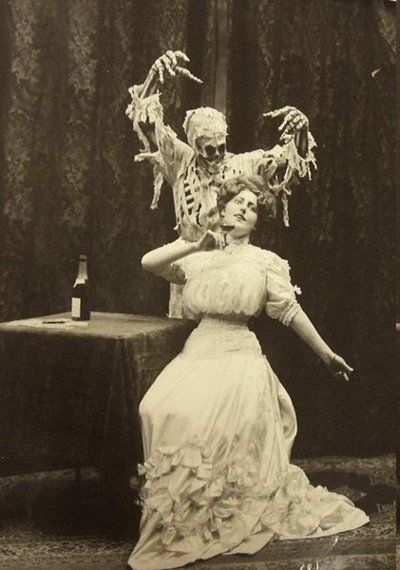 Spiritualism in the Victorian/Edwardian era: A THREAD https://abs.twimg.com/emoji/v2/... draggable="false" alt="👻" title="Geist" aria-label="Emoji: Geist">" title="https://abs.twimg.com/emoji/v2/... draggable="false" alt="👻" title="Geist" aria-label="Emoji: Geist"> Spiritualism in the Victorian/Edwardian era: A THREAD https://abs.twimg.com/emoji/v2/... draggable="false" alt="👻" title="Geist" aria-label="Emoji: Geist">">
Spiritualism in the Victorian/Edwardian era: A THREAD https://abs.twimg.com/emoji/v2/... draggable="false" alt="👻" title="Geist" aria-label="Emoji: Geist">" title="https://abs.twimg.com/emoji/v2/... draggable="false" alt="👻" title="Geist" aria-label="Emoji: Geist"> Spiritualism in the Victorian/Edwardian era: A THREAD https://abs.twimg.com/emoji/v2/... draggable="false" alt="👻" title="Geist" aria-label="Emoji: Geist">">

